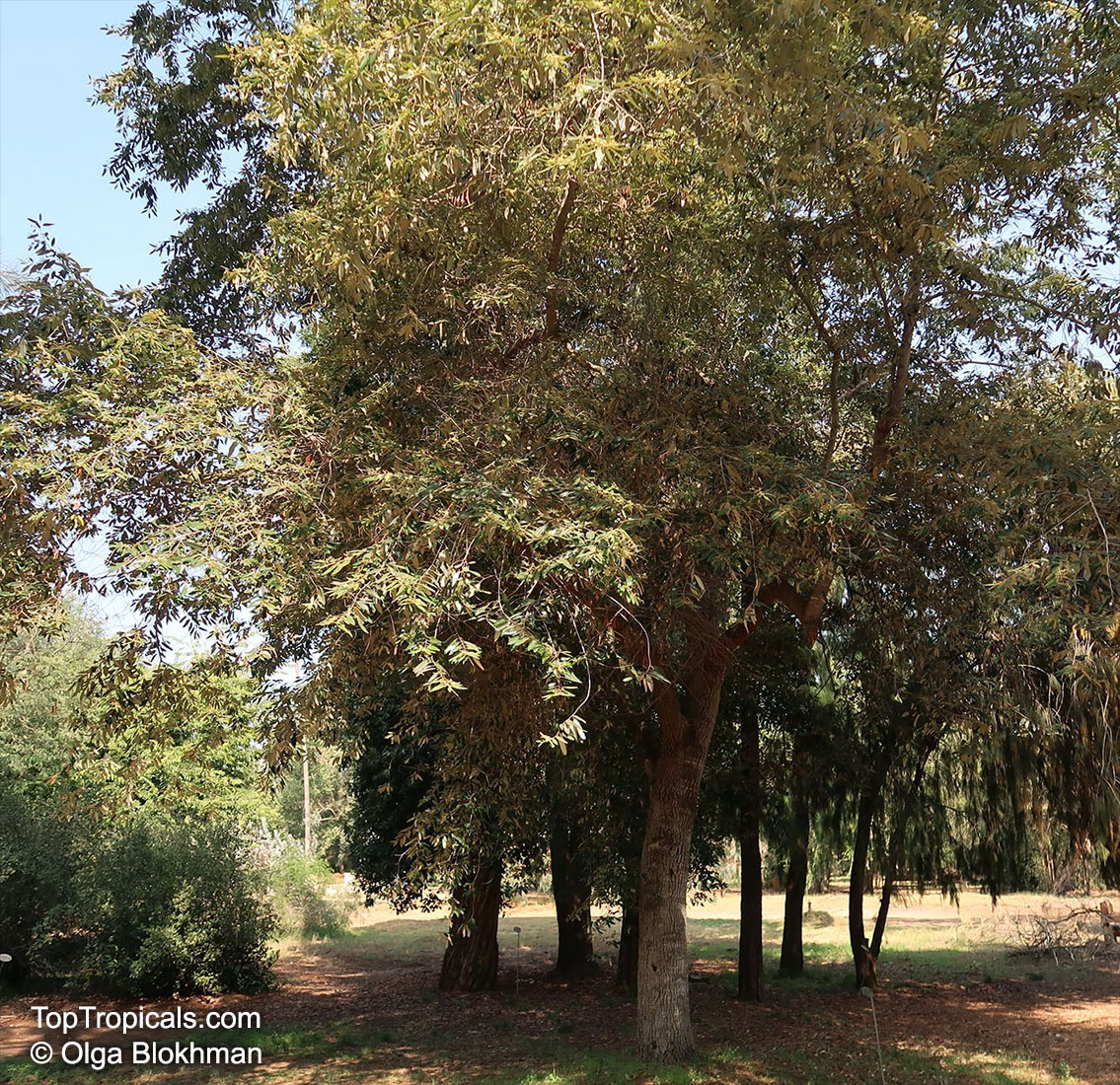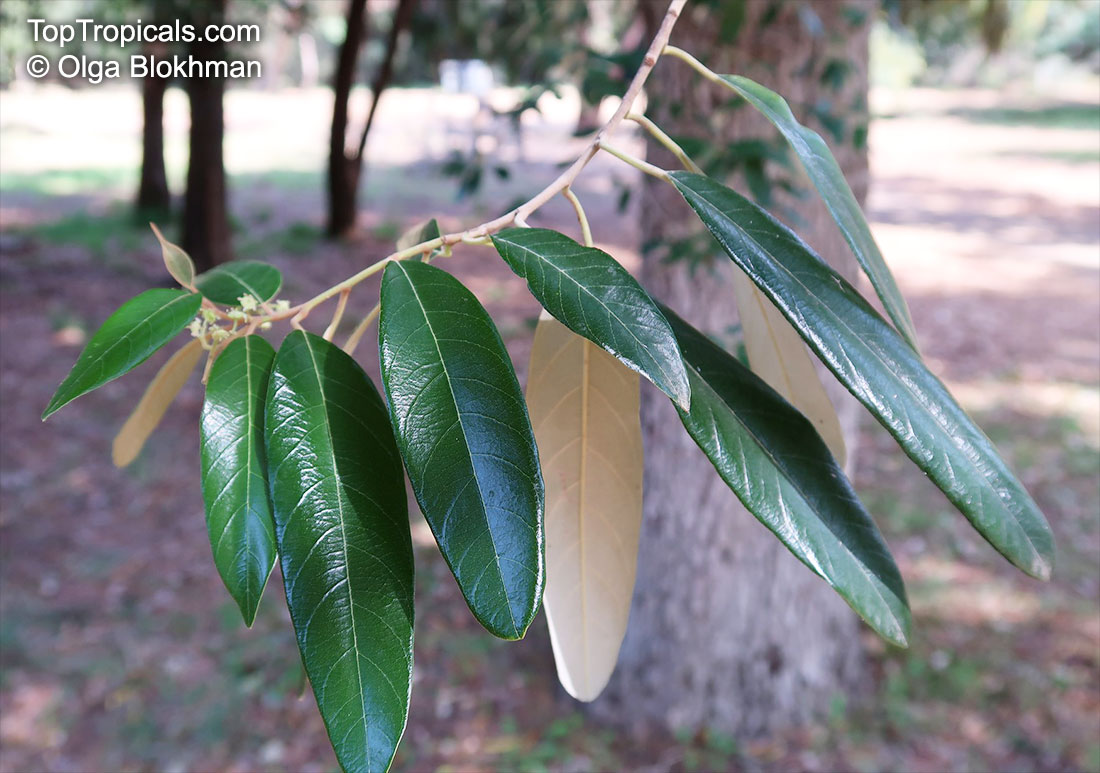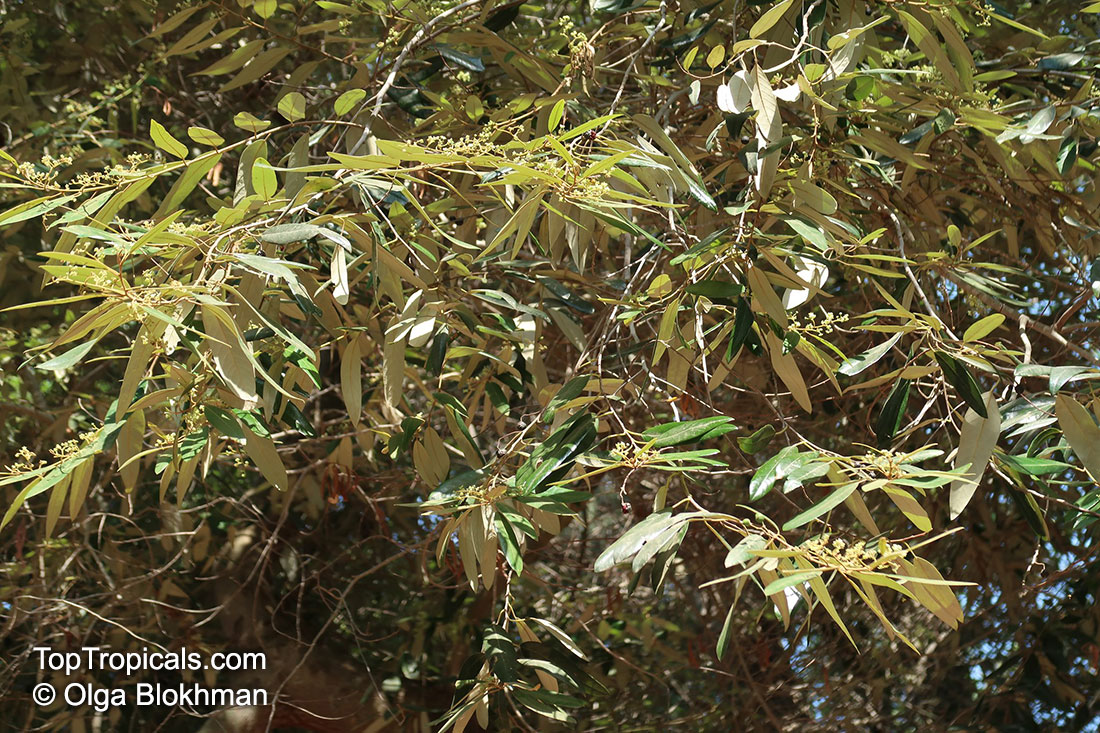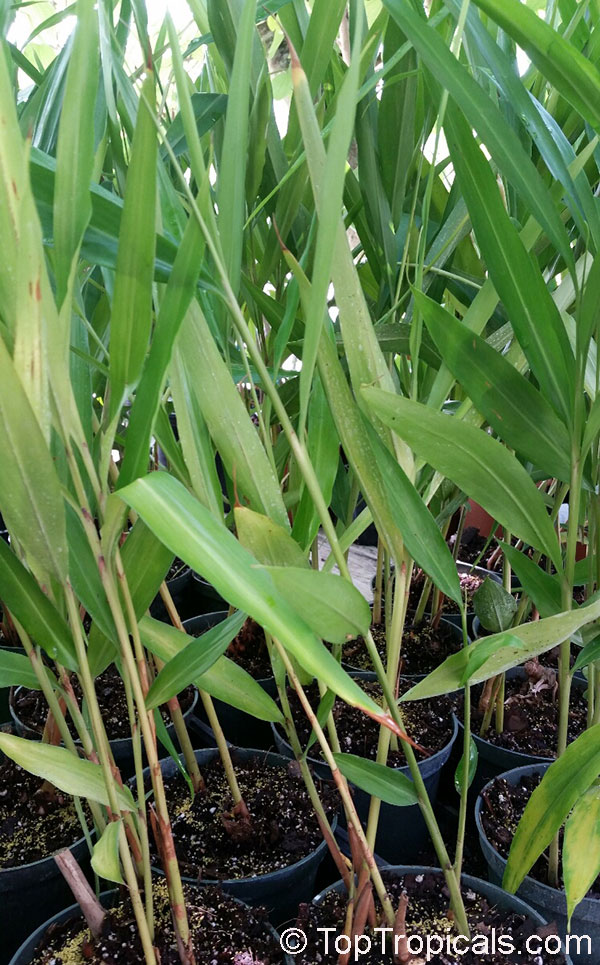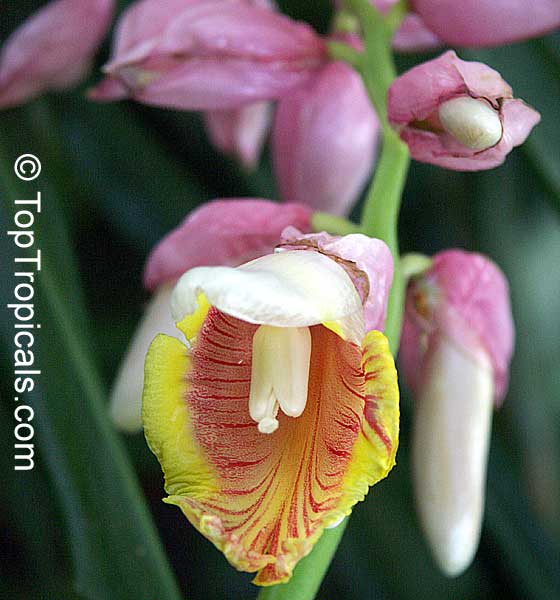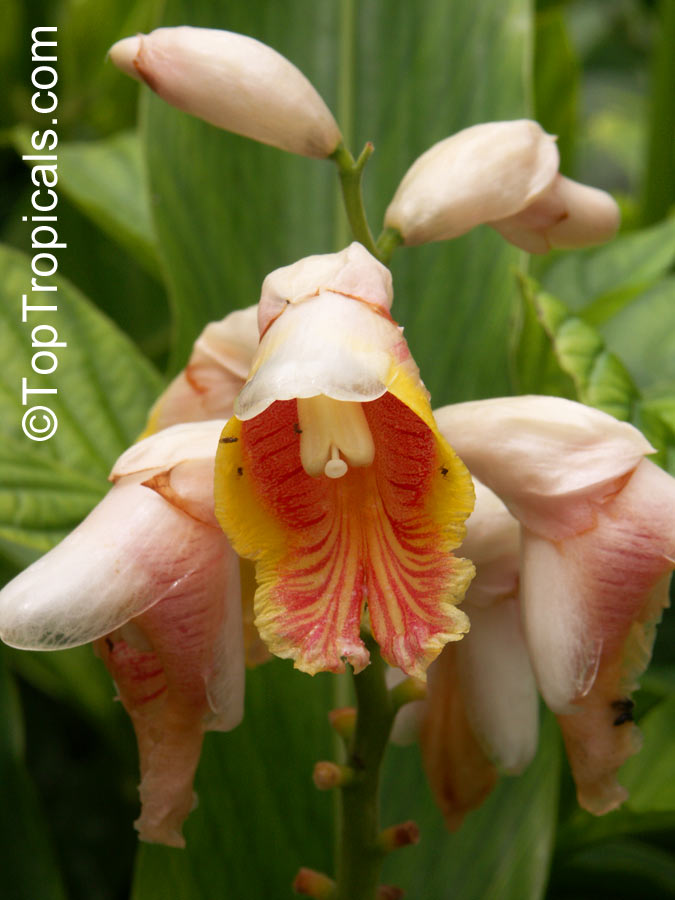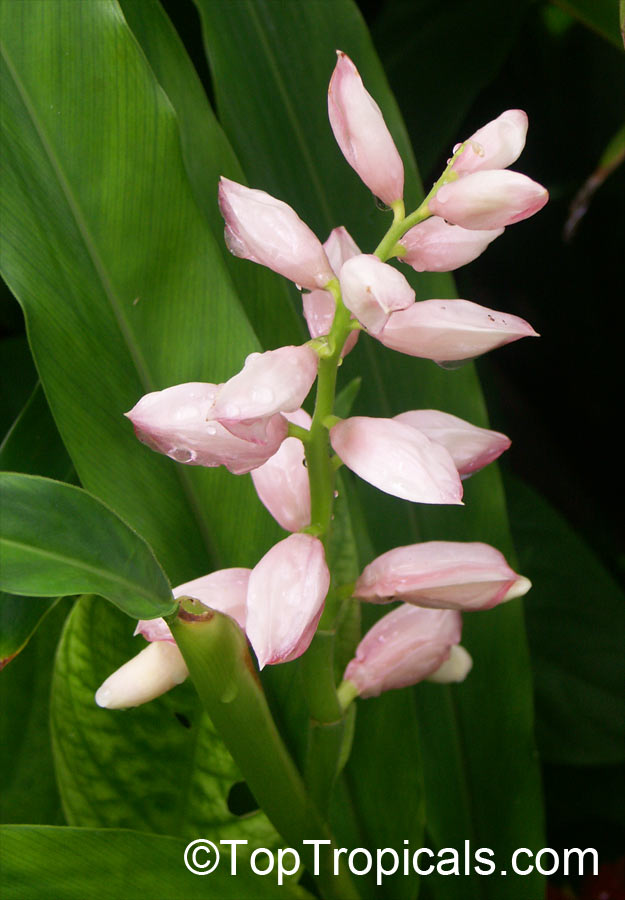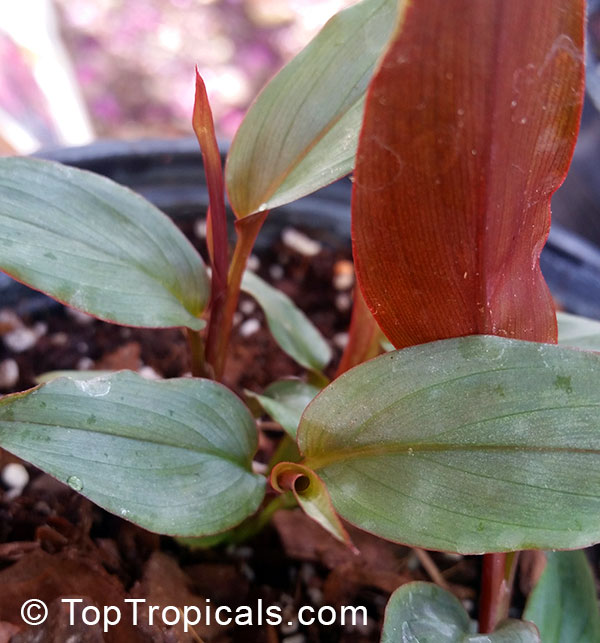Fragrant plant - Plant Encyclopedia Results (Page 3)
Top Tropicals Plant Encyclopedia
| Number of plants found: 916 |  | Prev | Next | 
|
Go to page: | 1 | 2 | 3 | 4 | 5 | 6 | 7 | Last |
Botanical name: Allamanda violacea
Common name: Allamanda
Family: Apocynaceae
Origin: Tropical America











A beautiful variety with delicate light cream flowers. An eye-stopper! A tropical deeply twining vine with whorled leaves and large, trumpet shaped flowers. Prickly seed pods follow the flowers with winged seeds that fly about when the pod dries and breaks open. Allamanda is perennial in tropical climates and may be treated as an annual or brought inside during cold weather and replanted after danger of frost. The plant has milky sap and is considered poisonous; all parts are highly cathartic (hence the botanical name). Grows well in most soils, but becomes chlorotic in very alkaline conditions. Train up a trellis, tree, or side of a building where there is support. In areas where there is seasonal change, keep fairly dry during winter and prune in spring before growth begins. It may be desirable to prune annually in any case to control for size.
Recommended Fertilizer: SUNSHINE Megaflor - Bloom Nutrition Booster
Recommended Fertilizer: SUNSHINE Megaflor - Bloom Nutrition Booster
Botanical name: Alocasia macrorrhizos
Common names: Giant Taro, Giant Elephant Ear, Upright Elephant Ear
Family: Araceae
Origin: Tropical Asia










Alocasia macrorrhizos is similar to other large-leafed arums such as the Xanthosoma sagittifolium, Peltrandra spp., and Colocasia esculenta, often called Taro. Alocasia macrorrhiza differs from the others in having an upright stem and holding its leaves upright, and in several technical characteristics that mean a lot to the botanists. Numerous hybrids have been produced from among the various Elephant Ear species, and it's not always possible to identify particular specimens.
It produced insignificant but fragrant white flowers on a sradix enclosed in a leaf-like, yellow-green spathe.
Giant taro is cultivated throughout the tropics for its edible rhizomes and shoots.
Alocasias require continual warmth and humidity. The soil should be rich but well drained, and the plant appreciates frequent watering (daily in hot weather), especially as if grows larger. Note however, that when the plant is young and small, too much water (particularly if the weather is cold) will rot the tuber, so be careful not to overdo it.
Bright light is preferred, but it will do well in anything up to 80 percent shade. Leaves tend to grow larger in shadier positions. Full sun is usually not preferred and may discolor the leaves, although it will usually cope with a bit of full sun provided it can get enough water.
Recommended Fertilizer: SUNSHINE Robusta - Rapid Growth Booster
Recommended Fertilizer: SUNSHINE Robusta - Rapid Growth Booster
Last one
Recommended Fertilizer: SUNSHINE Robusta - Rapid Growth Booster
Botanical name: Alocasia odora
Common name: Giant Upright Elephant Ear
Family: Araceae
Origin: Tropical Asia










It grows in light shade to partial sun, in a well-drained, fuzzy soil. Where cold winter temperatures occur, it is best to plant these in a container that can be moved indoors; they are only cold-hardy to Zone 7-11, so Zone 8 and below should take extra caution, as this plant cannot tolerate frost.
A tall, woody perennial, Alocasia odora typically grows up to 5-10 feet tall in its native Tropical Asia. With its large, striking leaves and small, off-white/white fragrant flowers, it has become a popular ornamental choice for gardens. The foliage has an intense shine, and striking color contrast with the veining and patterning.
Alocasia odora prefers partial shade and regular water. It will tolerate bog or aquatic garden conditions and flood-like conditions. It requires a soupy soil or a soil that allows for good drainage.
In order to ensure a healthy, robust growth, it is important to evenly water the plant regularly, ideally using a moisture meter to determine the proper moisture level. It is also recommended to place the plant in spots where it will receive plenty of indirect sunlight and to fertilize it bi-weekly.
However, in cold regions, it is essential to be aware of the fact that Alocasia odora is only cold-hardy to temperatures at least as low as 30°F for a short time. To prevent any cold damage, it is best to move the plant indoors and it might be good to keep it in a pot rather than planting it in the ground.
Overall, Alocasia odora adds a unique texture and delicate beauty to any garden or home. With its large, architectural leaves and fragrant blooms, it is no wonder that this plant has become a much sought-after ornamental for any garden.
Alocasia 'Tiny Dancer' is unlike any other.This hybrid (scientific name: Alocasia brisbanensisxlocasia odora), created in 2013 is known for its long green petioles with small cupped leaves in a unique teardrop shape. While the plant grows upright, its petioles tend to fan out, curving in different directions like they are dancing.
Alocasia 'Imperial Red' is a hybrid between Alocasia odora and a pink petioled (stem) clone of Alocasia Macrorrhiza.
Requires consistently moist soil; do not let dry out between waterings. Very high moisture needs; suitable for bogs and water gardens.
Recommended Fertilizer: SUNSHINE Robusta - Rapid Growth Booster
Botanical names: Aloysia gratissima, Lippia lycioides, Aloysia lycioides
Common names: Whitebrush, Beebrush
Family: Verbenaceae
Origin: Mexico, South America










Grown in full sun to partial shade, Aloysia gratissima is a large and moderately tolerant shrub native to Mexico and South America. It can grow up to 5-10 feet tall, producing fragrant white or off-white flowers with yellow and orange centers in the spring through fall. Attracting butterflies and hummingbirds, this ethnomedical plant is drought tolerant, low-water use, and tolerant of soils which are poorly drained.
It thrives in USDA Zones 8-11. In cold regions, Aloysia gratissima should be grown in a large enough pot to prevent it from freezing, and the pot should be brought inside during severe weather. Provide shade or mulch when temperatures dip too low, and be sure to water deeply after periods of extreme cold. Use a slow-release fertilizer to encourage healthy growth.
Botanical name: Aloysia virgata
Common names: Sweet Almond Bush, Incense Bush
Family: Verbenaceae
Origin: Mexico, South America








Aloysia virgata is very attractive to butterflies and hummingbirds. Native to Mexico and South America, Aloysia virgata (Sweet Almond Bush) is a large shrub that can reach heights of 5-10 feet tall. This plant prefers to be grown in full sun or semi-shade, with a moderate amount of water. Its fragrant, white to off-white flowers attract butterflies, hummingbirds, and other pollinators. It makes a great addition to any garden, with the bonus of a lovely scent.
Aloysia virgata is a fast-growing shrub, requiring very little care for best performance. In order to maintain its appearance and shape, it is important to prune it back periodically. It is also possible to grow it as a potted plant in cold regions, as long as the plant is given careful growing and care instructions.
For successfully growing Aloysia virgata in a pot in cold climates, the container must have good drainage to prevent waterlogging, and should be brought indoors when temperatures reach the mid 30s F. It is important to note that the pot should be large enough to accommodate the rate of growth of the plant. The soil must include compost or mulch for nutrients, and the soil should be kept consistently moist but not overly wet. During the winter, the soil needs to also be mulched to help ensure insulation from extreme cold temperatures.
Aloysia virgata is a beautiful and fragrant shrub that can provide near year-round beauty to any home garden. With proper care and maintenance, it can thrive in full sun or partial shade, and in a wide range of climates and soils.
Slender, densely branched deciduous shrub, 3 to 10 feet tall, 8 feet in spread. Fragrant foliage. White to yellow flowers appear in spring to fall with strong almond scent. attractive to butterflies and bees. This is a honey plant. Low water use, drought tolerant.
Recommended Fertilizer: SUNSHINE Megaflor - Bloom Nutrition Booster
Last one
Botanical name: Alphitonia excelsa
Common names: Red Ash, Soap Tree, Silver Leaf
Family: Rhamnaceae
Origin: Australia





Flowers, although individually insignificant, cover the tree with clusters of small cream blossoms in late autumn and early winter.
Botanical names: Alpinia galanga, Languas galanga
Common names: Galanga Root, Galangal, Thai Ginger, Laos
Family: Zingiberaceae
Origin: SE Asia









Galanga is an herb used in cooking, especially in Indonesian and Thai cuisines. It is one of four plants known as galangal, and is differentiated from the others with the common name greater galangal (or simply Thai galangal). The galangals are also called blue ginger or Thai ginger.
A. galanga is called laos in Indonesian and is the most common form of galangal used in cooking. It is also known as lengkuas and galanga root.
Botanical name: Alpinia henryi
Common name: Pink porcelain lily
Cultivar: Pink Perfection
Family: Zingiberaceae
Origin: Subtropical Asia







Among the best-known members of this genus is Alpinia henryi 'Pink Perfection', a large shrub or small tree reaching 5-10ft in height and 2-5ft in width. Its native habitat is Subtropical Asia, but it can be successfully grown as an ornamental in USDA zones 9-11. It's a hardy and attractive plant, with deep green, glossy foliage and an abundance of pink flowers throughout the year. In the right conditions, it can be a real show-stopper, its flowers being especially fragrant.
Caring for Alpinia henryi 'Pink Perfection' is not particularly difficult. It prefers a spot in full sun or semi-shade, in well-drained soil, and regular watering. Some mulching during the summer can help protect the roots from the heat. It can suffer from frost damage, so if you're growing it in a pot in a cold region, you should move it indoors during the winter months. Also, the plant may suffer from mealybugs, so if you notice their presence it's best to take appropriate action as soon as possible.
In general, Alpinia henryi 'Pink Perfection' is an easy-to-care-for plant that can make a wonderful addition to any garden or conservatory. With its lush foliage, abundant flowers, and heavenly fragrance, it can certainly bring a touch of the exotic and an undeniable beauty to your outdoor spaces.
Botanical name: Alpinia luteocarpa
Common name: Red Bamboo Ginger
Family: Zingiberaceae
Origin: Philippines









This fragrant ginger looks like a dwarf bamboo bush. This Ginger boasts dark green leaves with red undersides. Bamboo Ginger is also a fragrant ginger that looks like a dwarf bamboo bush with a great clumping habit. Perfect patio container plant. Prefers some shade. Mature height of 2-3'. Reaches 2-3' and produces flowers.
The specific epithet luteocarpa means yellow fruit.
 | Prev | Next |  |
Use link to repeat this search:
https://toptropicals.com/cgi-bin/garden_catalog/cat.cgi?search_op=and&keyword_op=and&language=e&number=10&no_change_lang=1
&v1=fgt&user=tt&sale=1&first=0
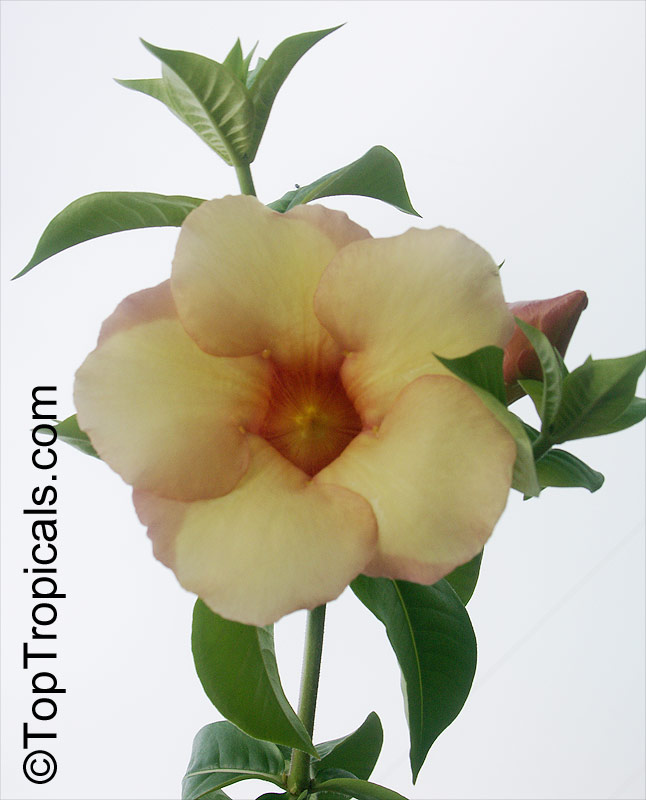
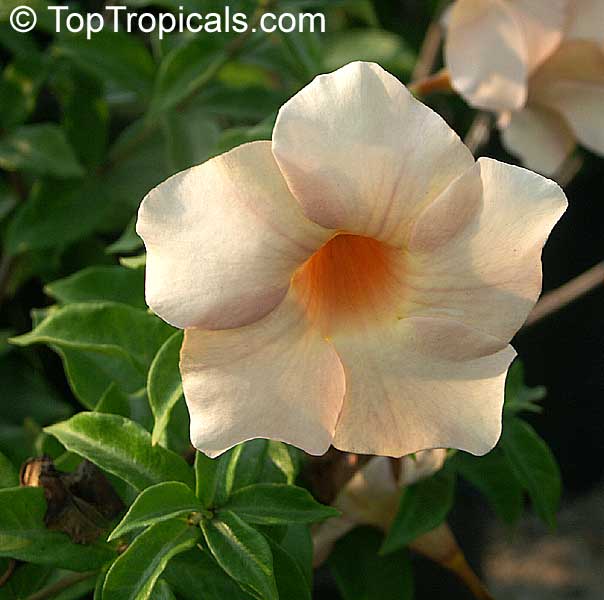
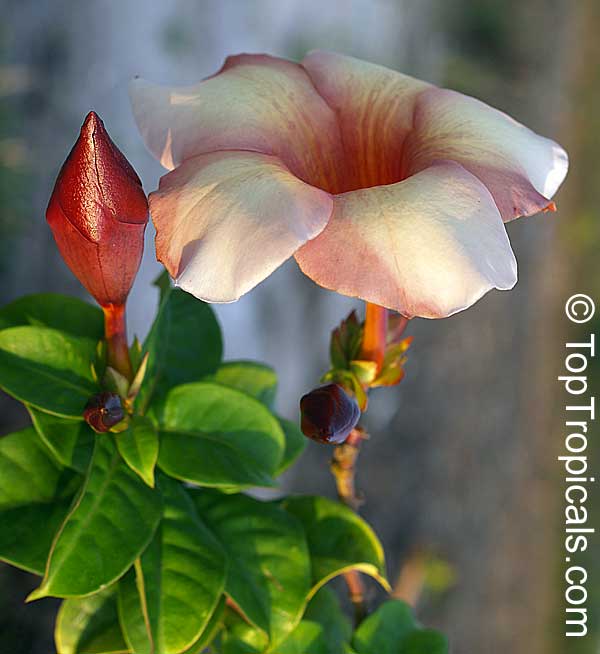
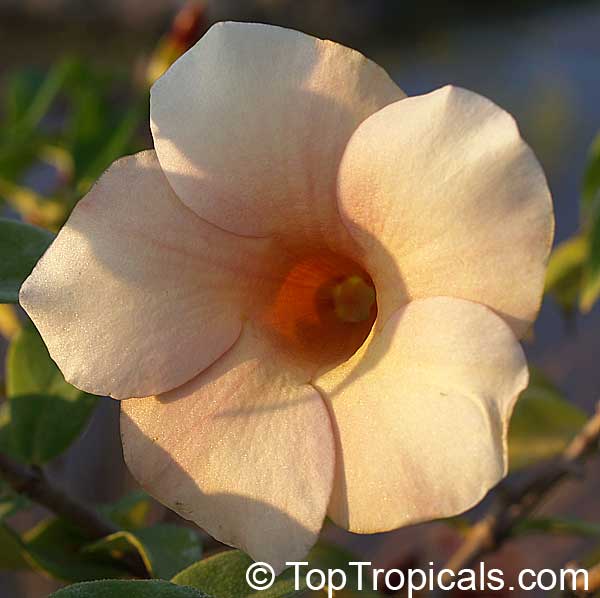
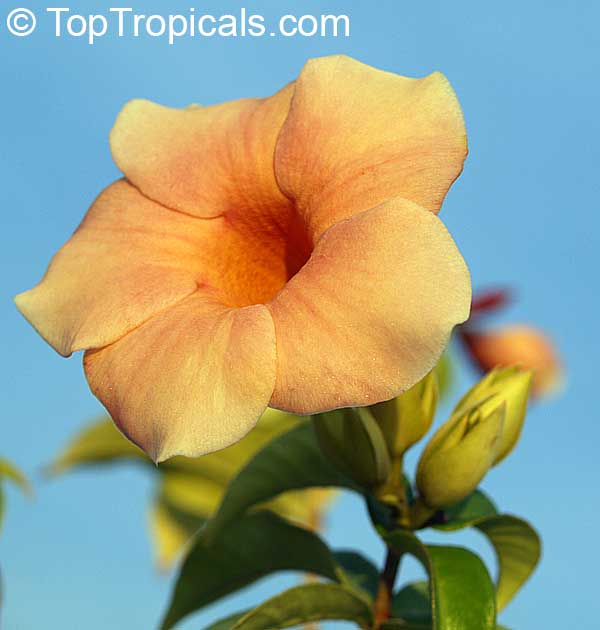
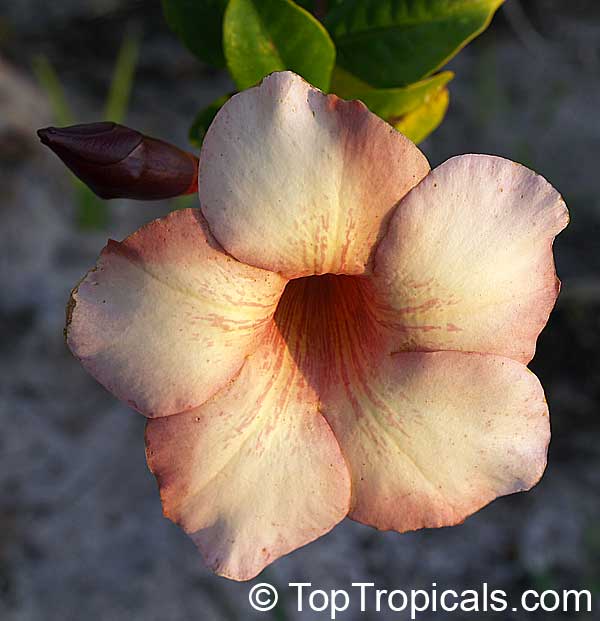
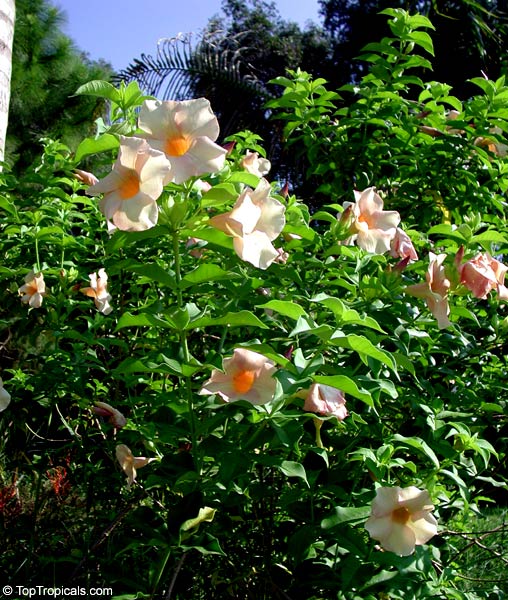
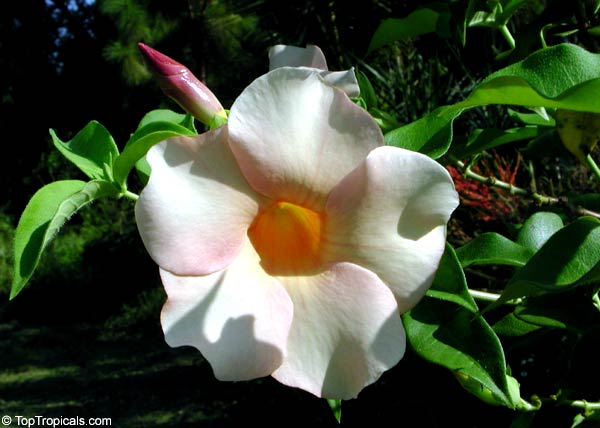
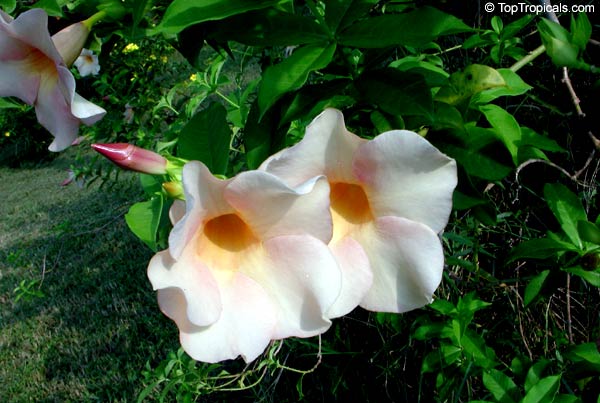
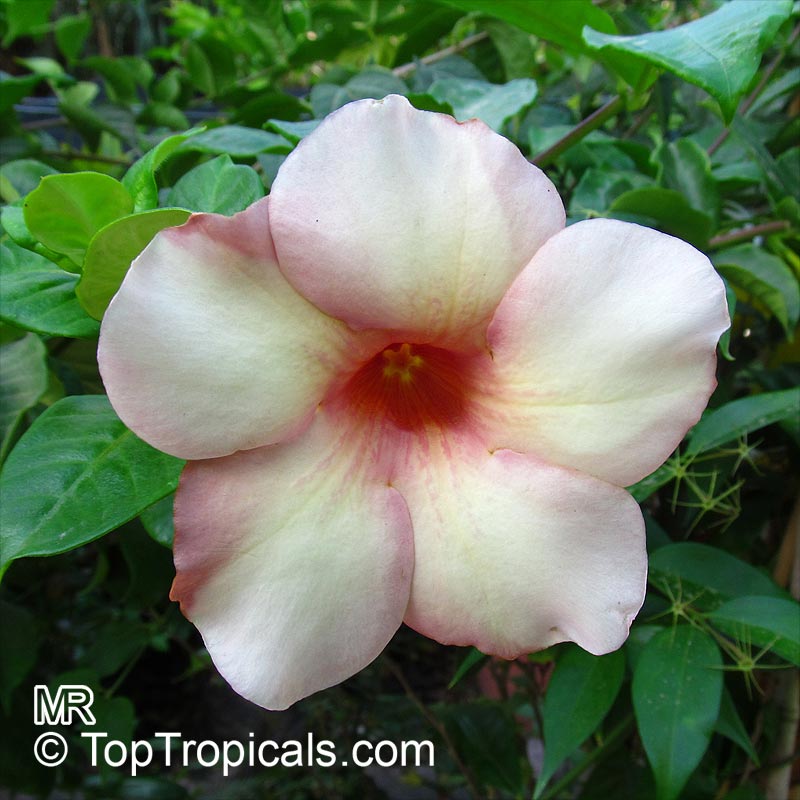
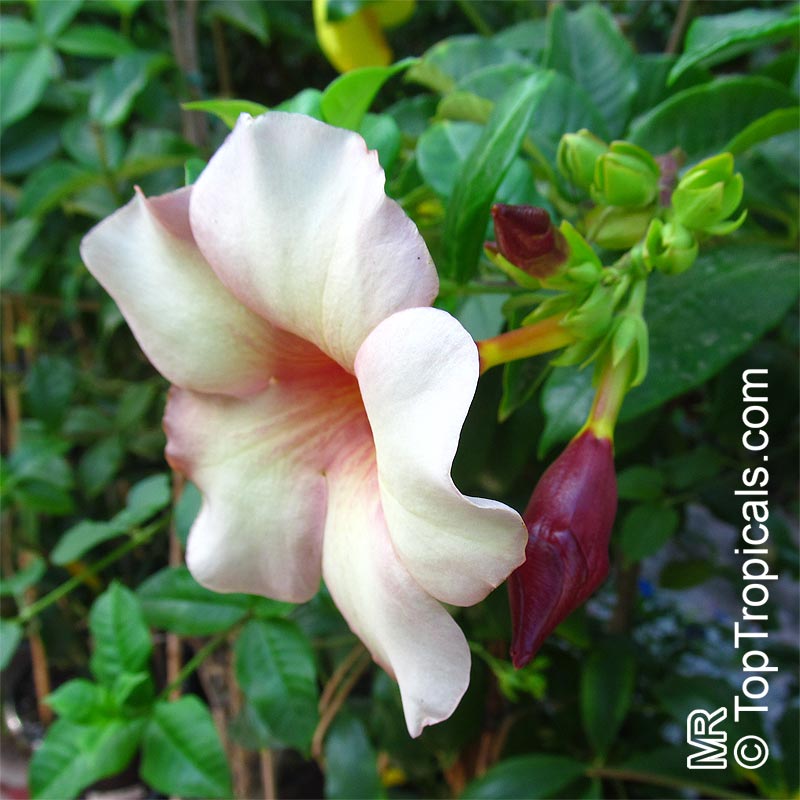
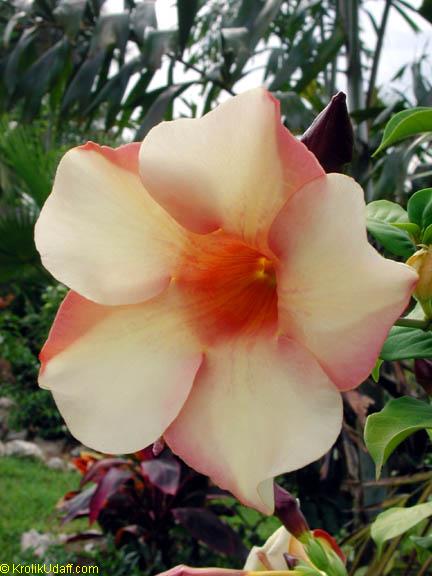
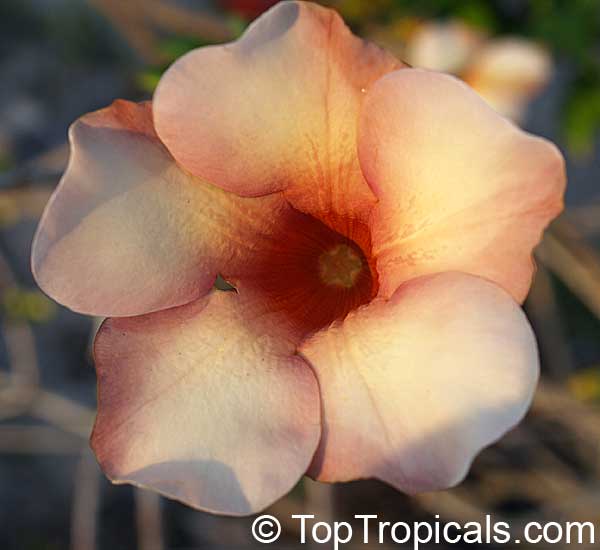
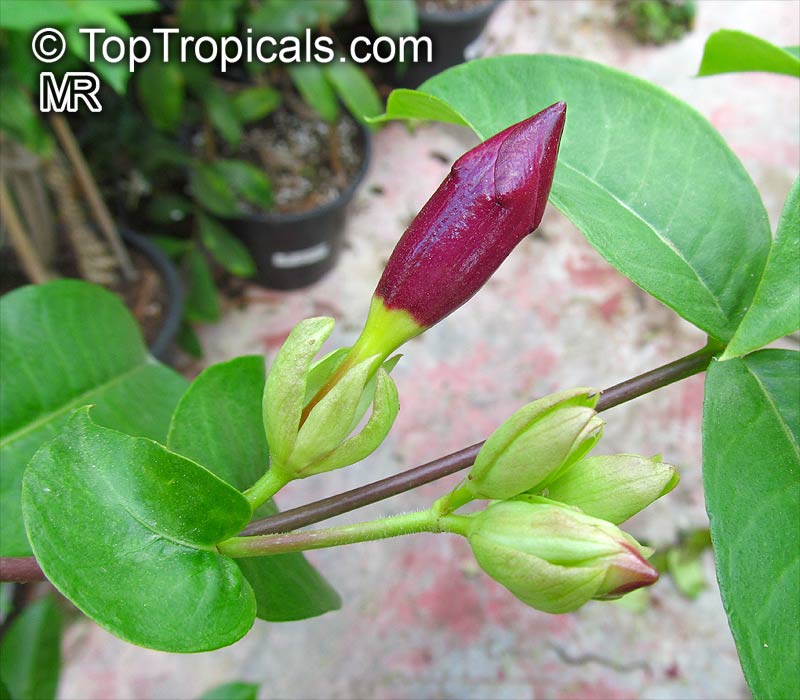
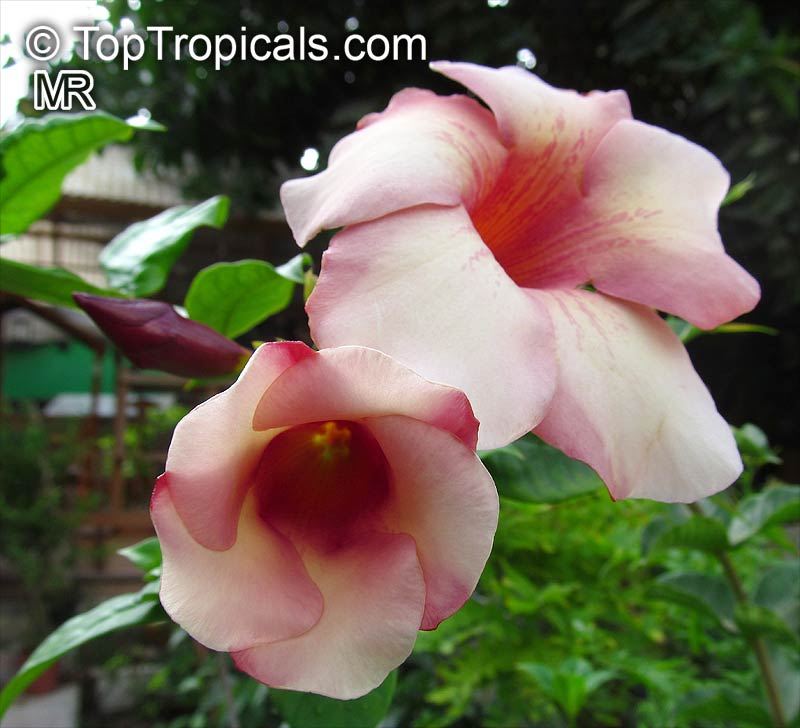
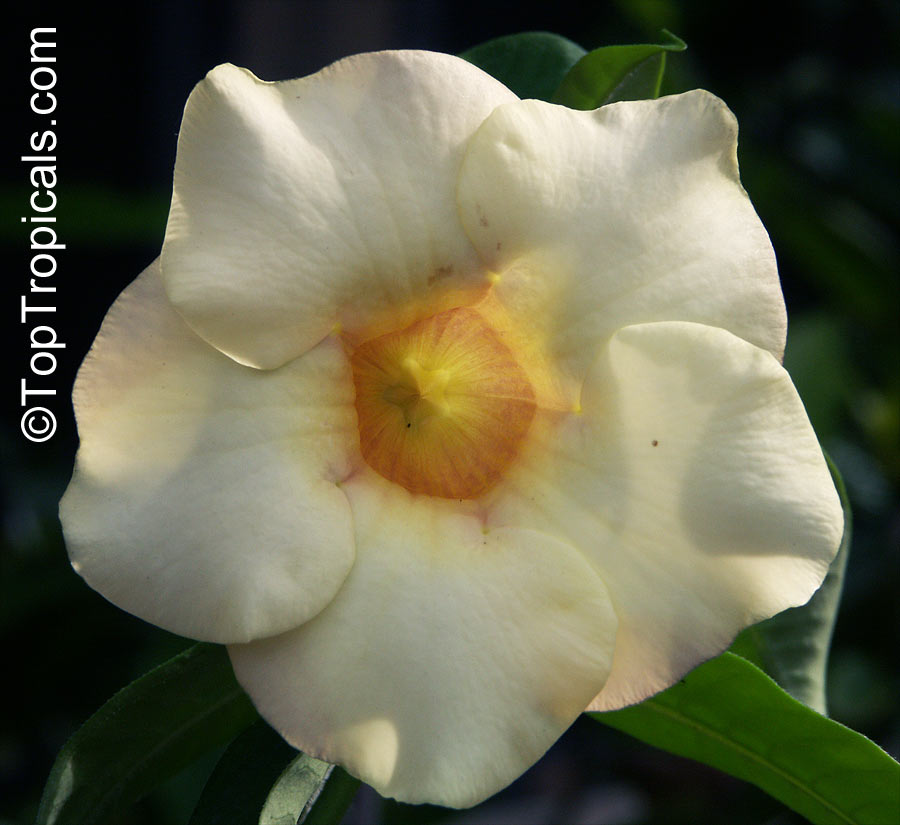
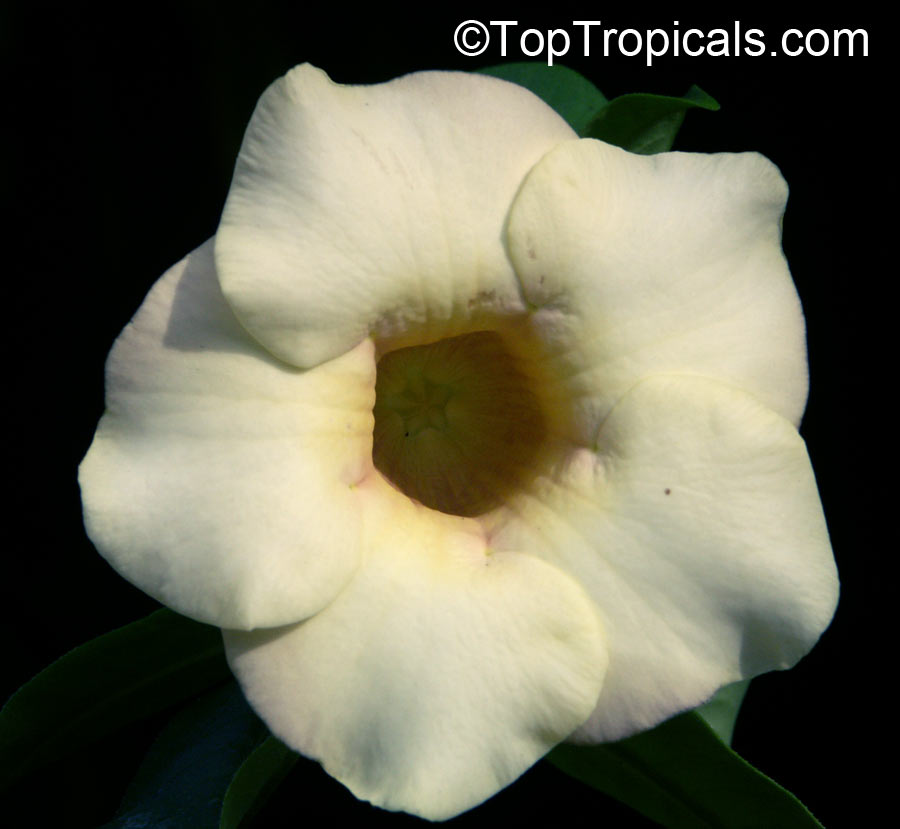
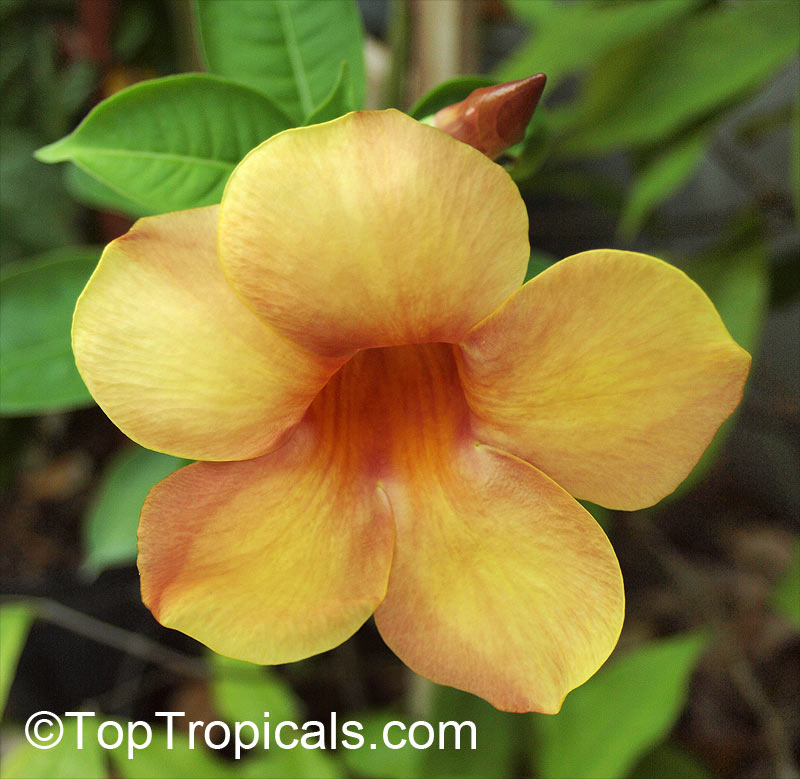

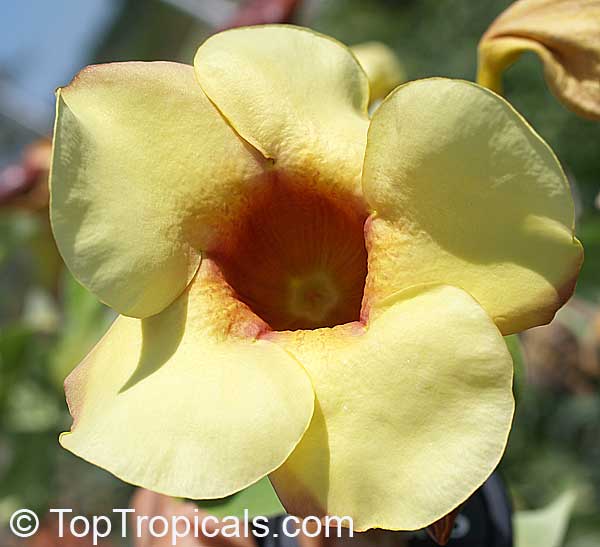
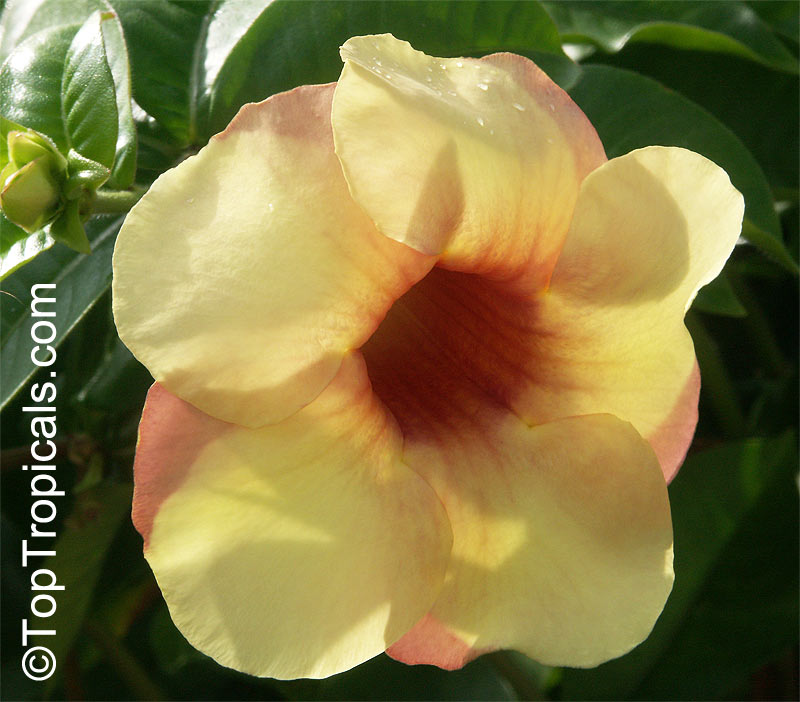
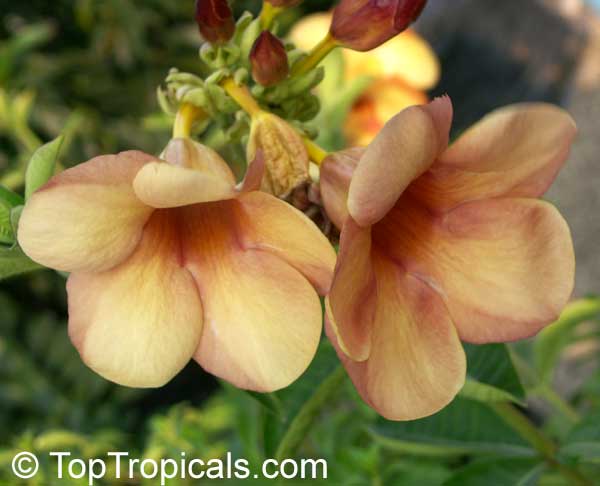
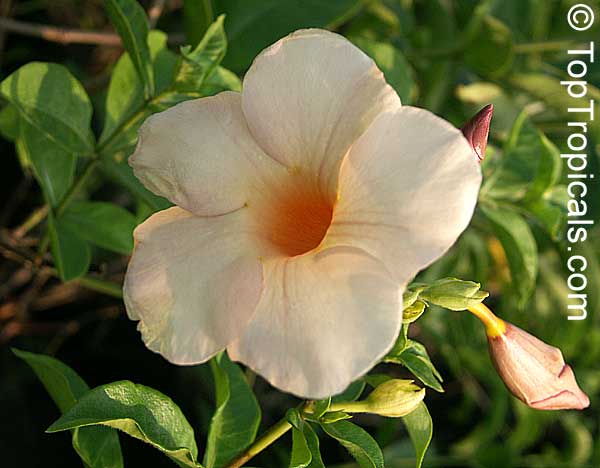
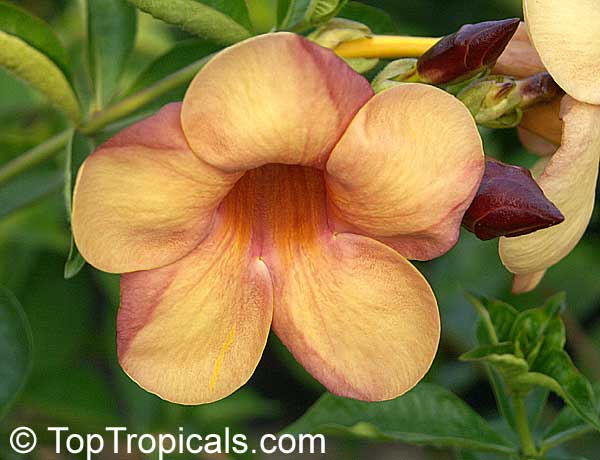
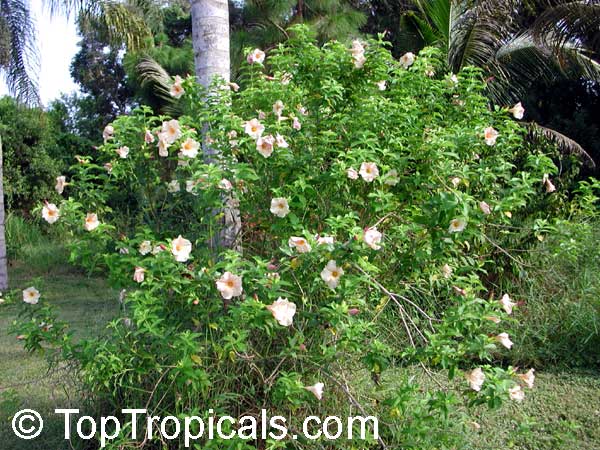
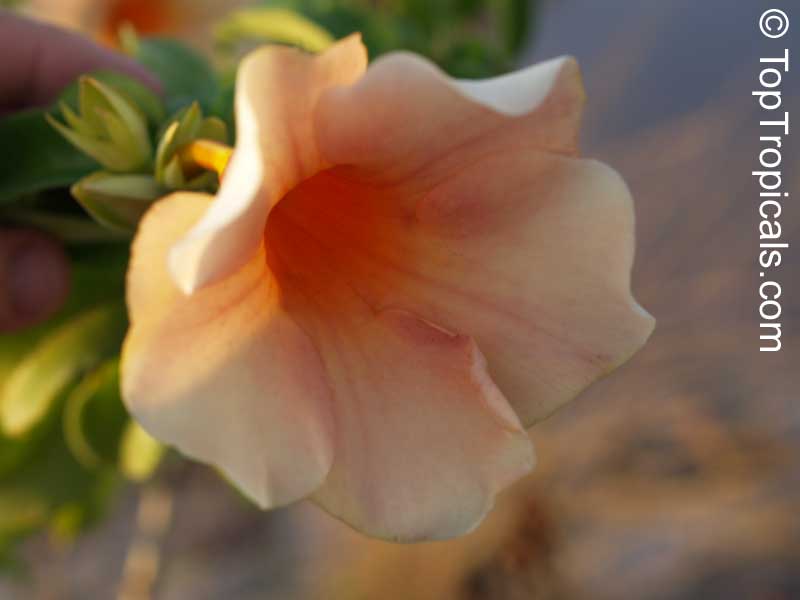
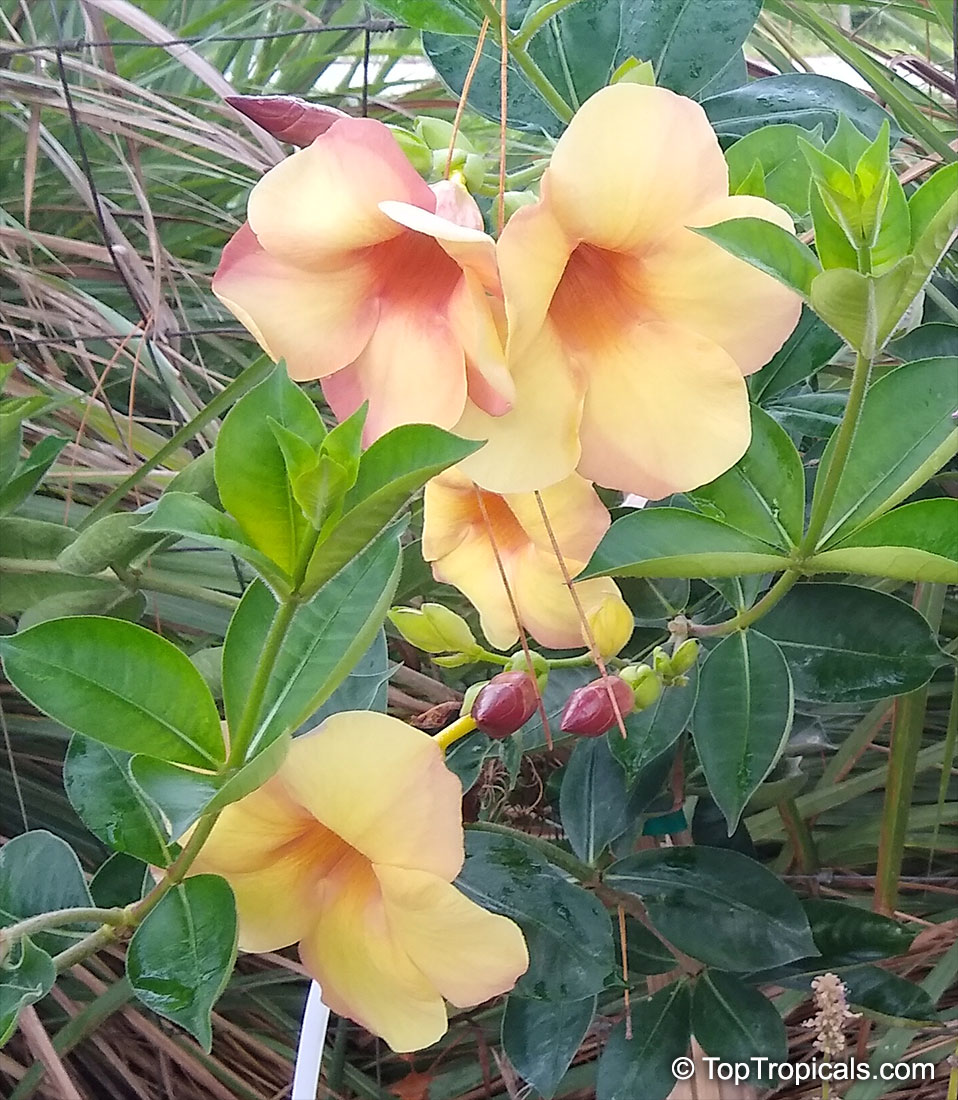
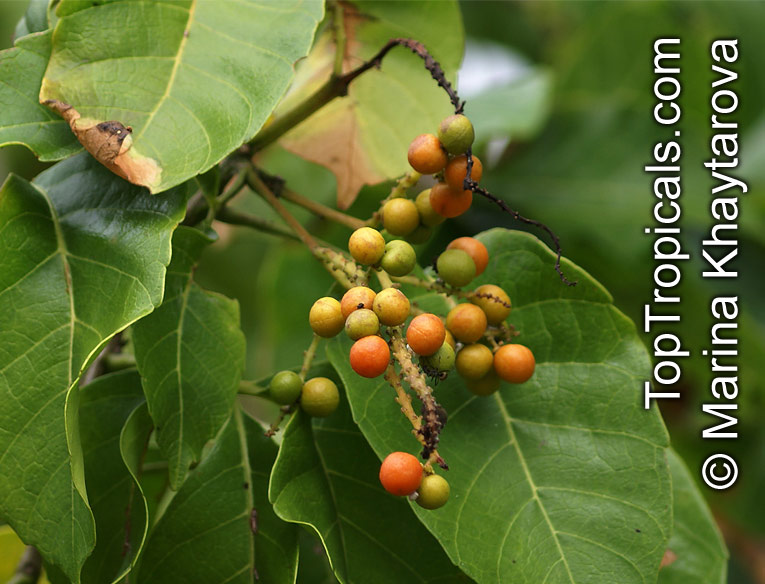
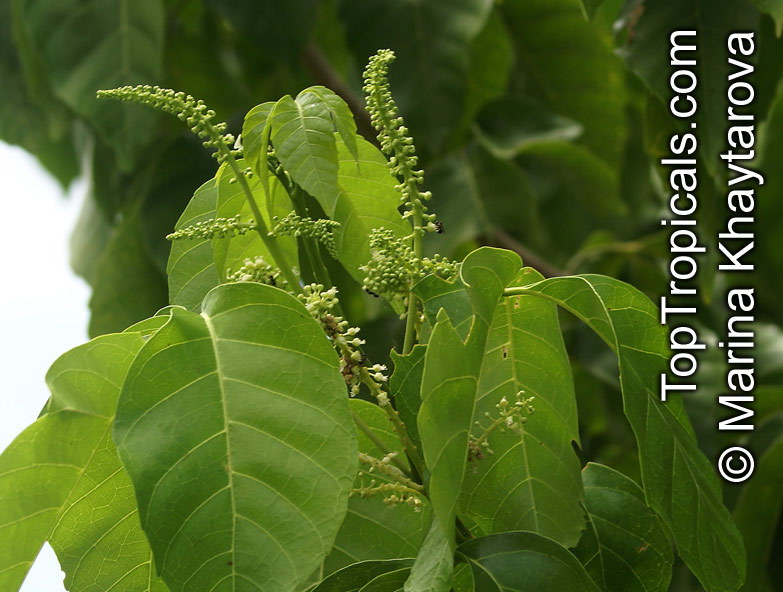
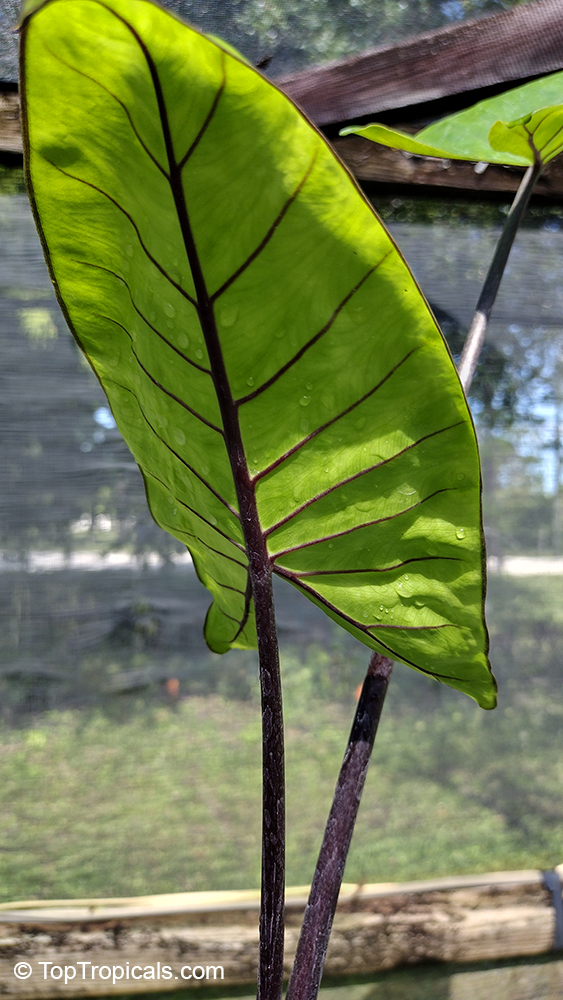
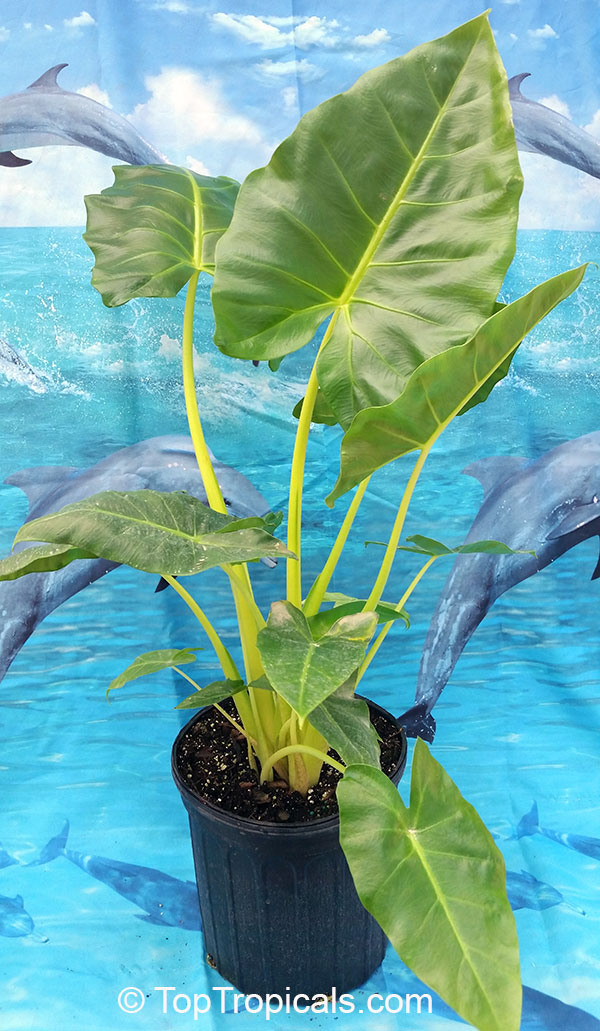
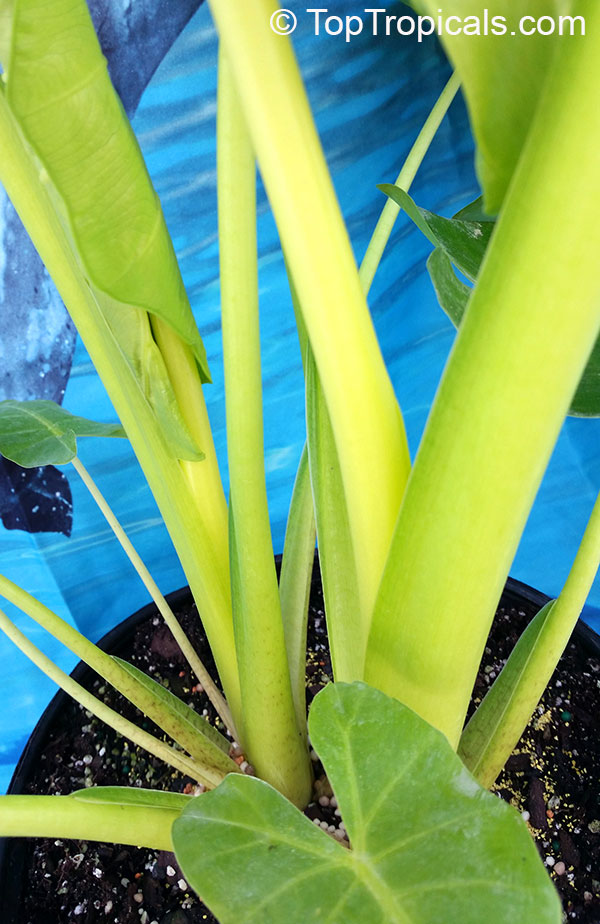
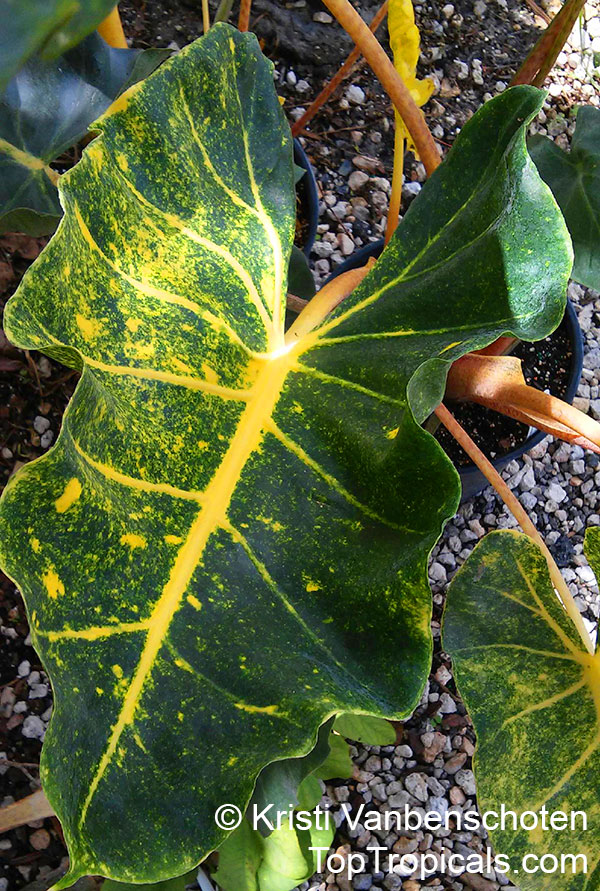
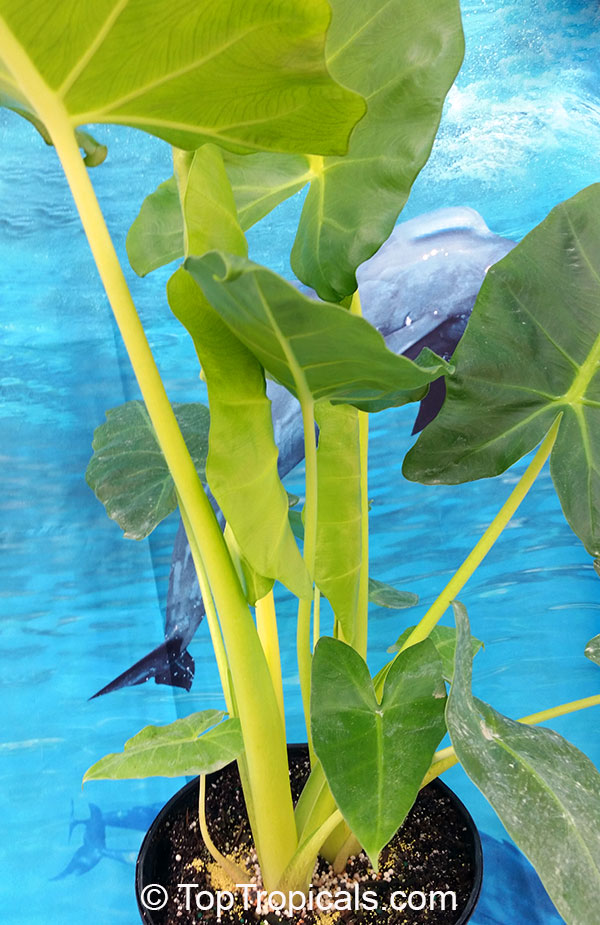
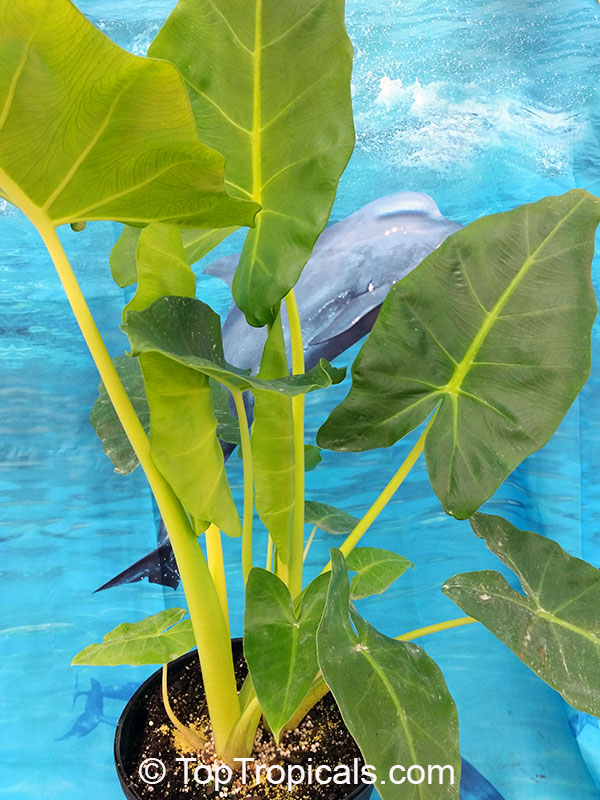
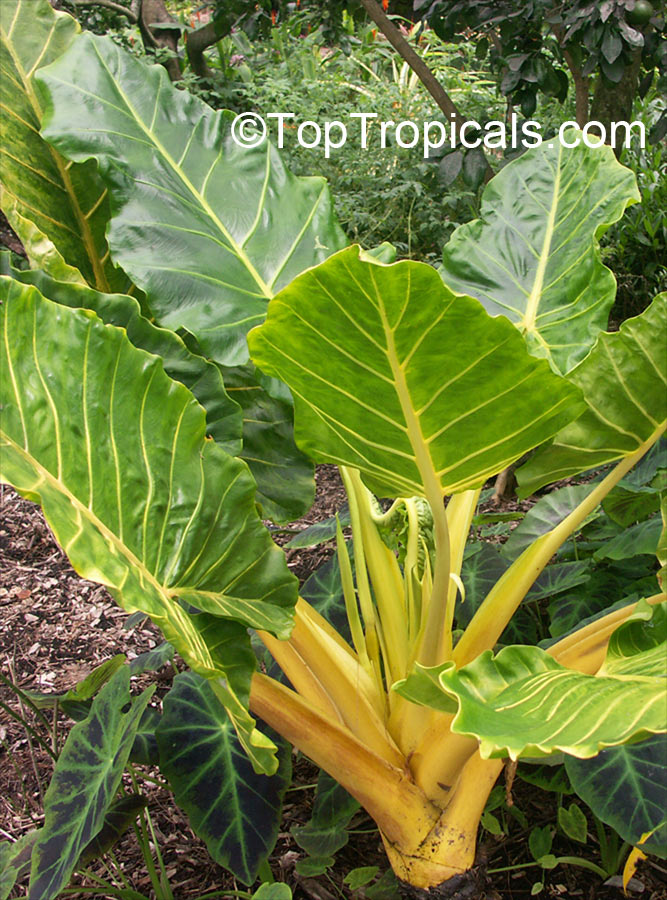
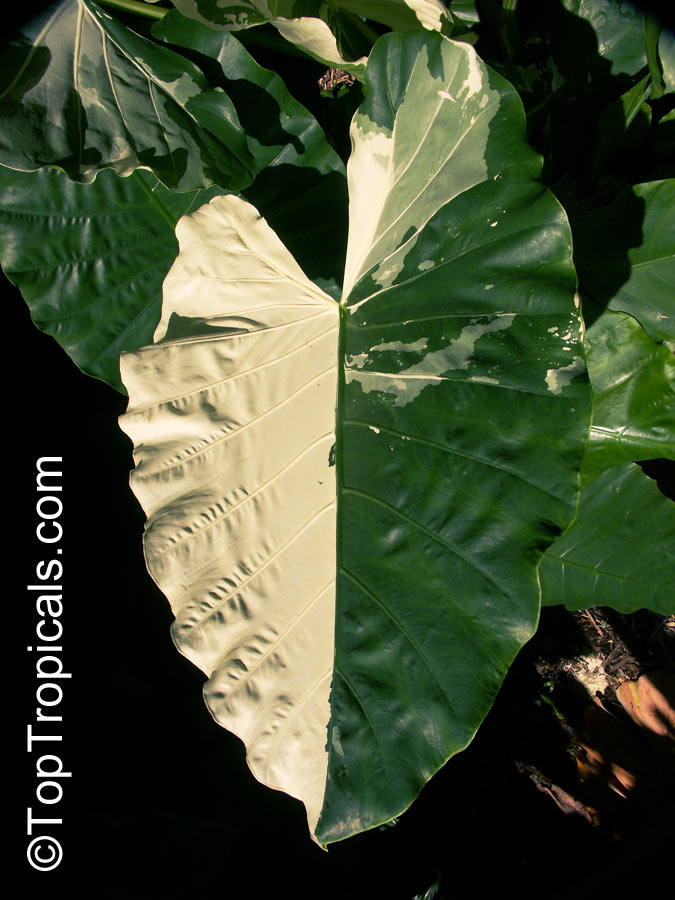
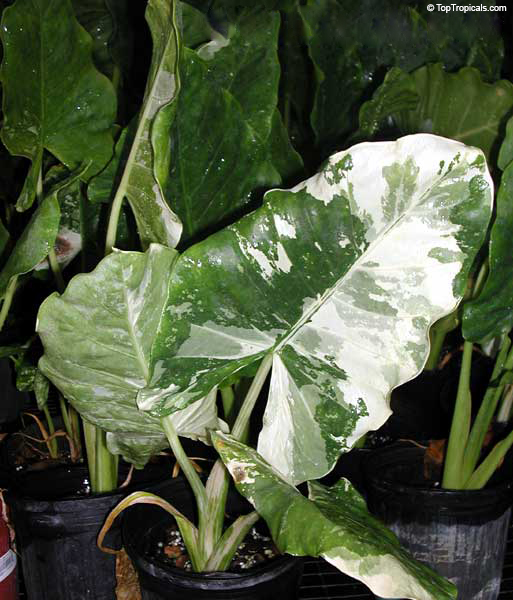
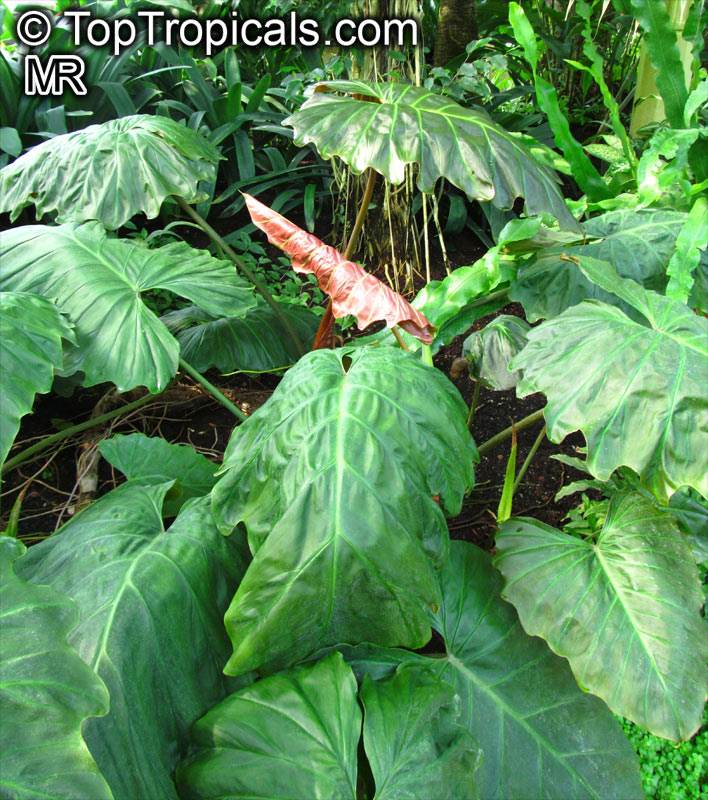
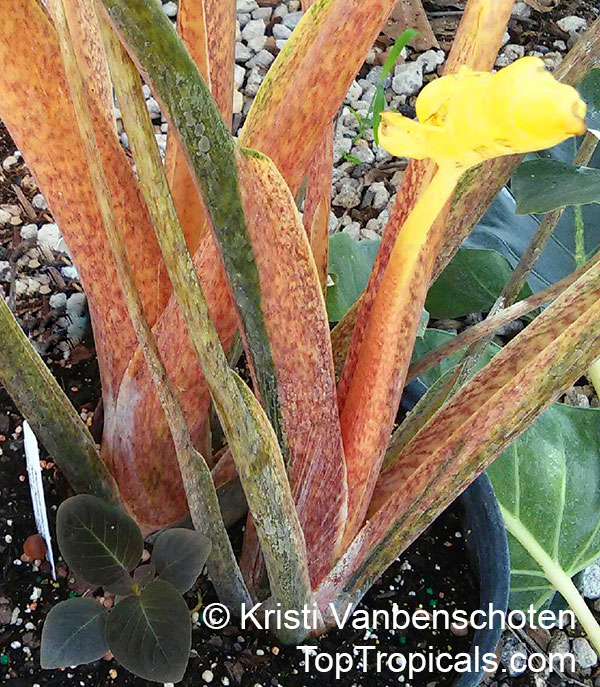
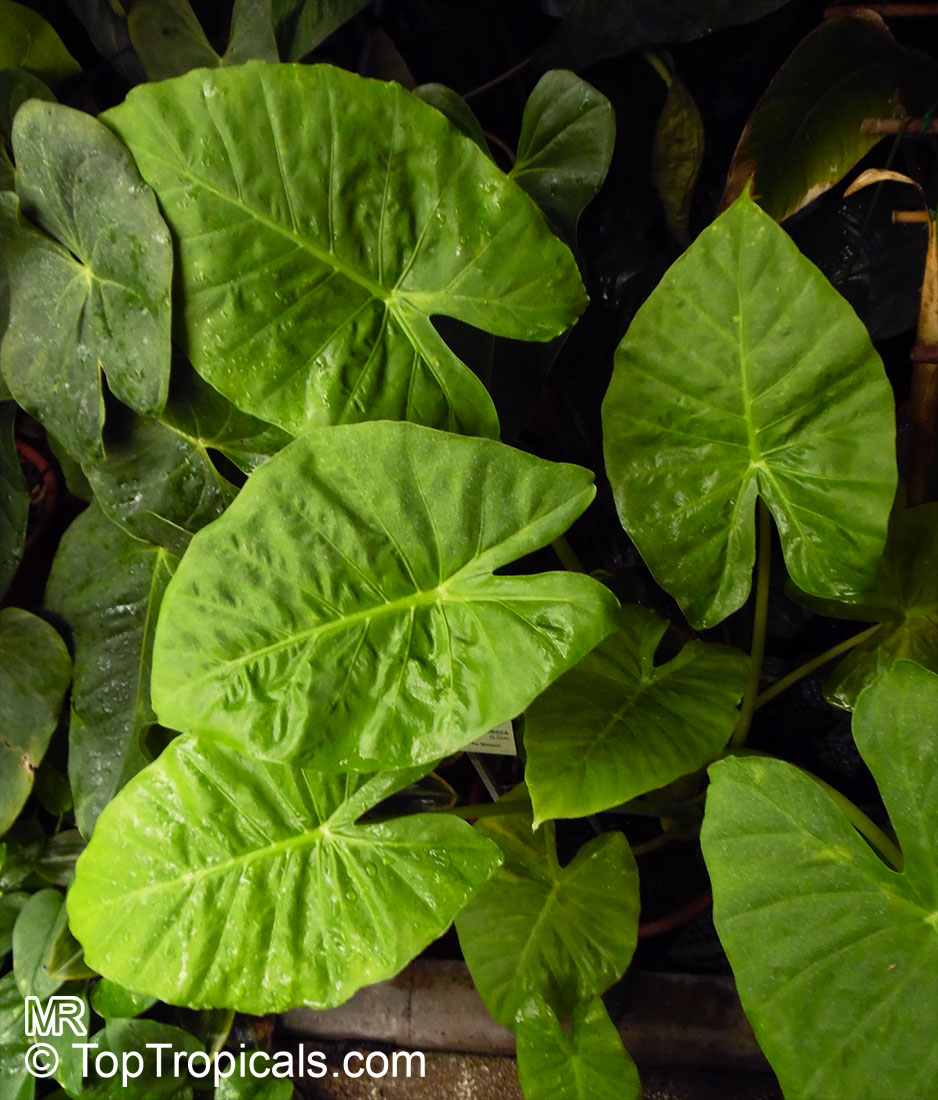
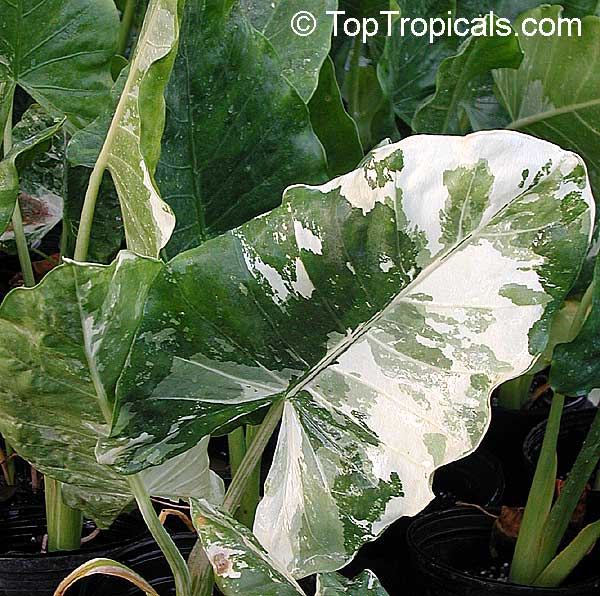
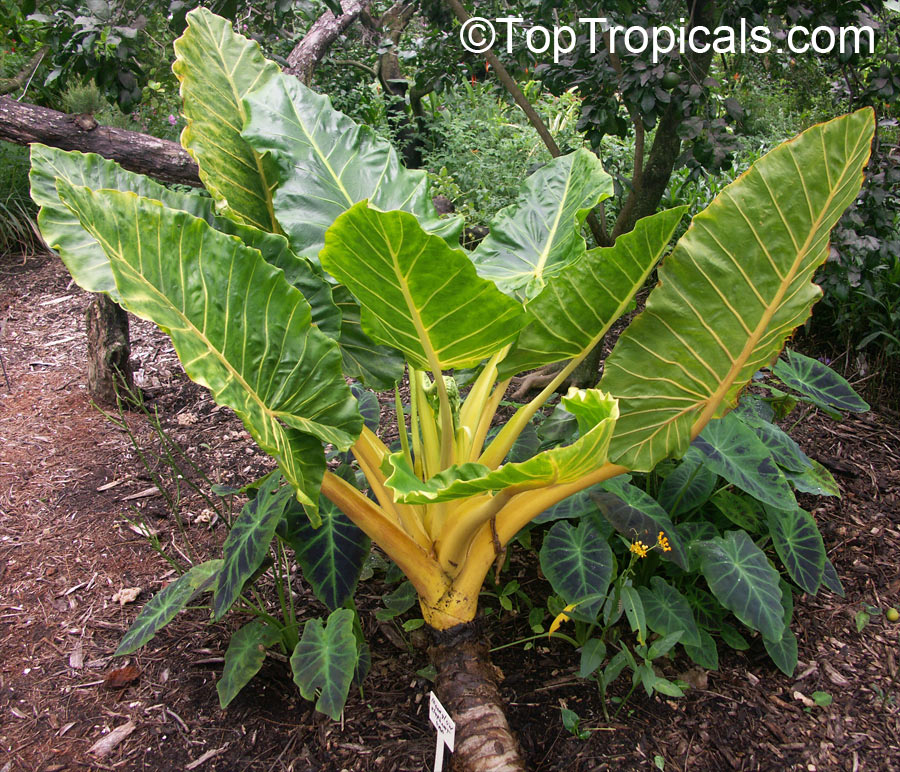
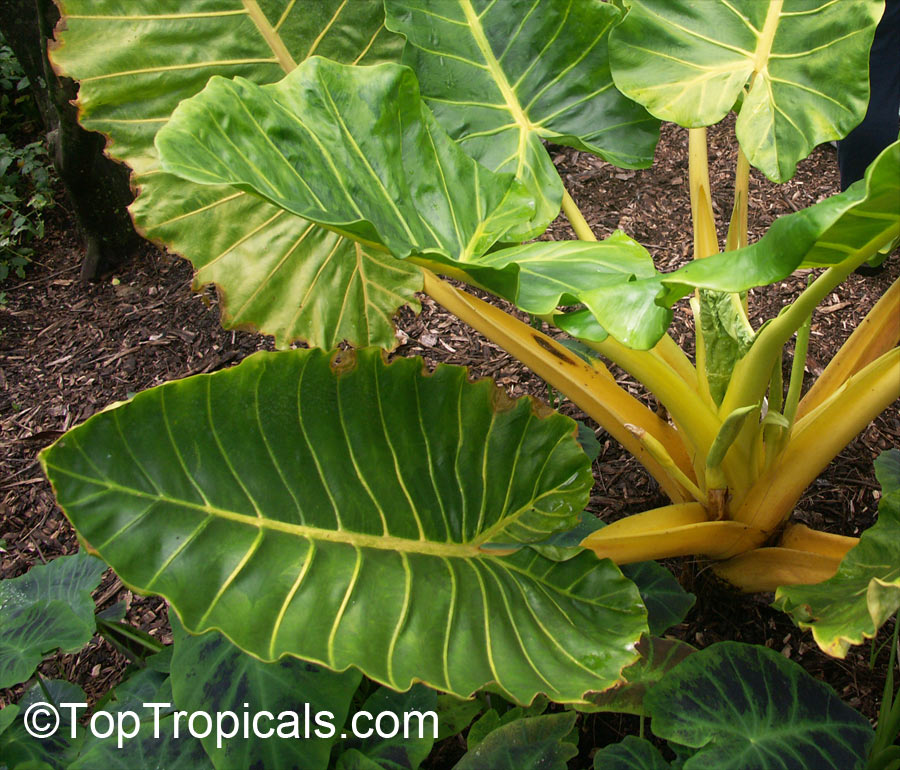
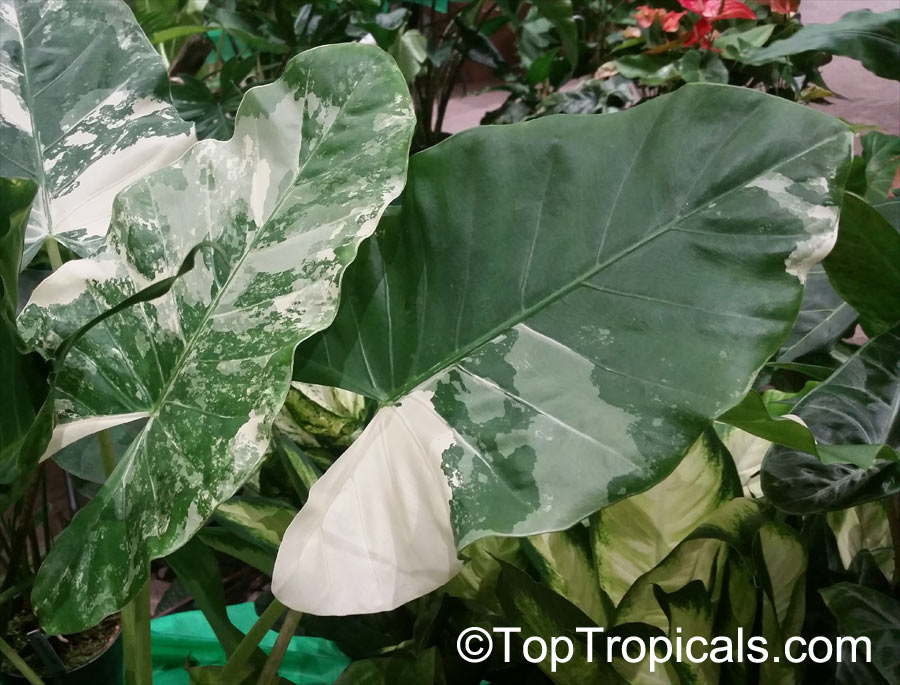
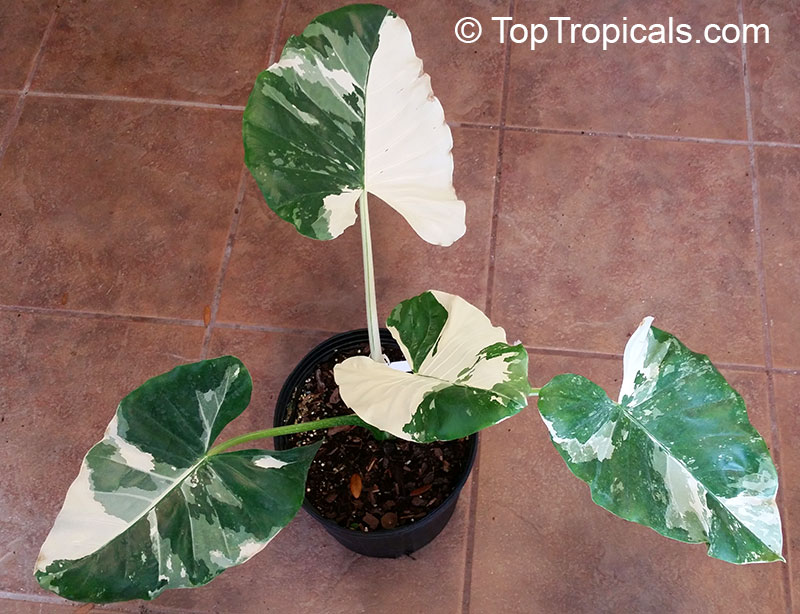
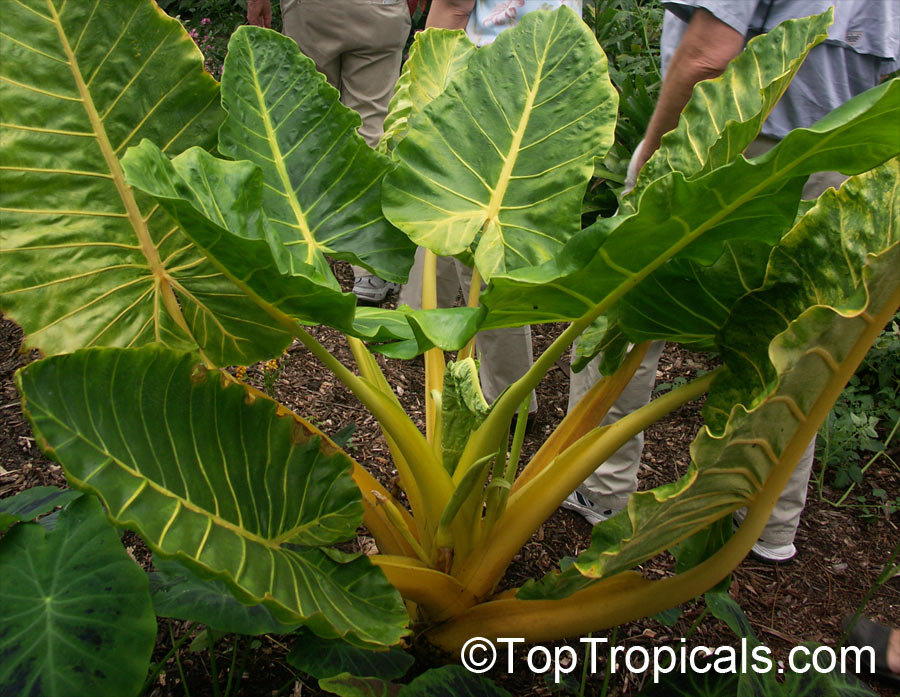
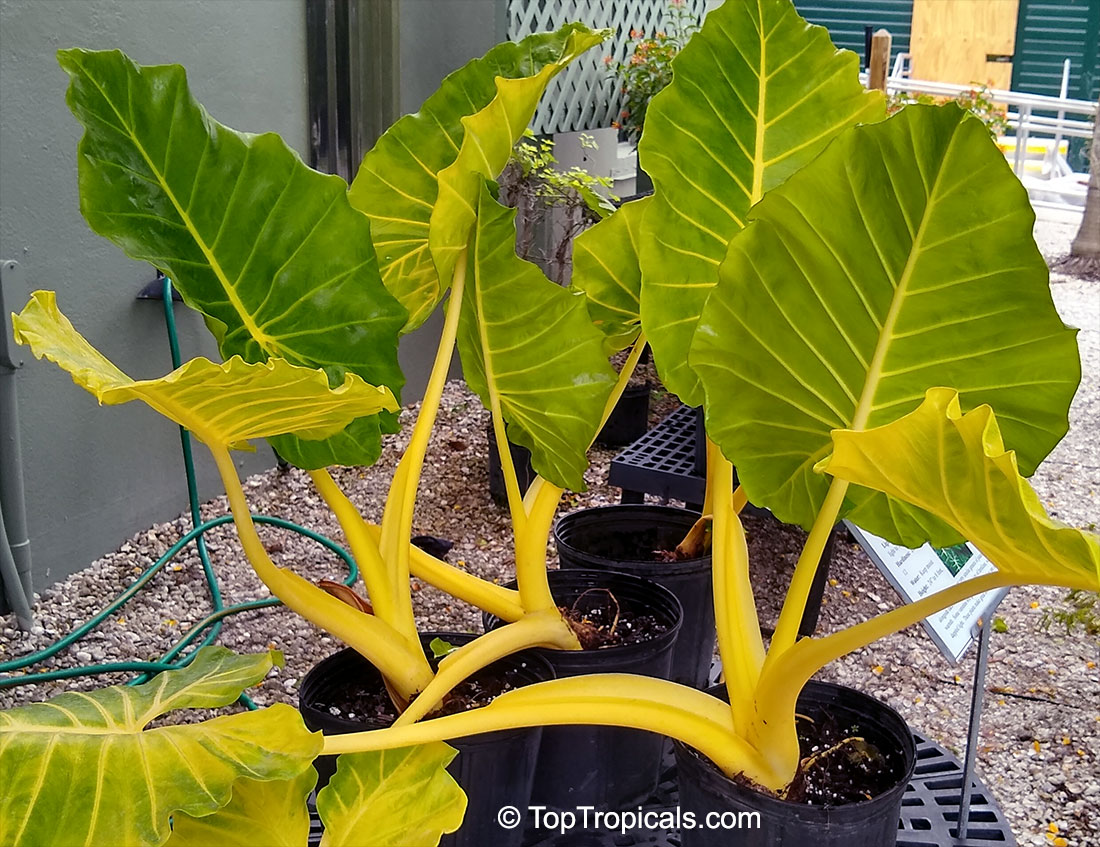
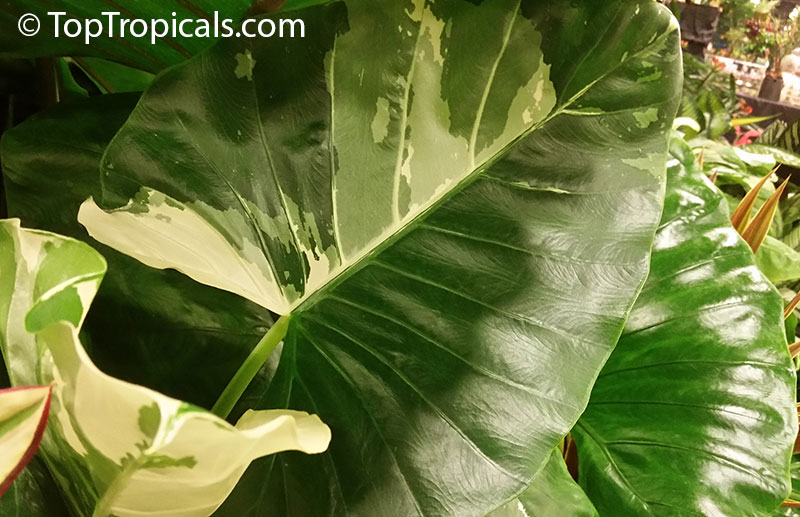
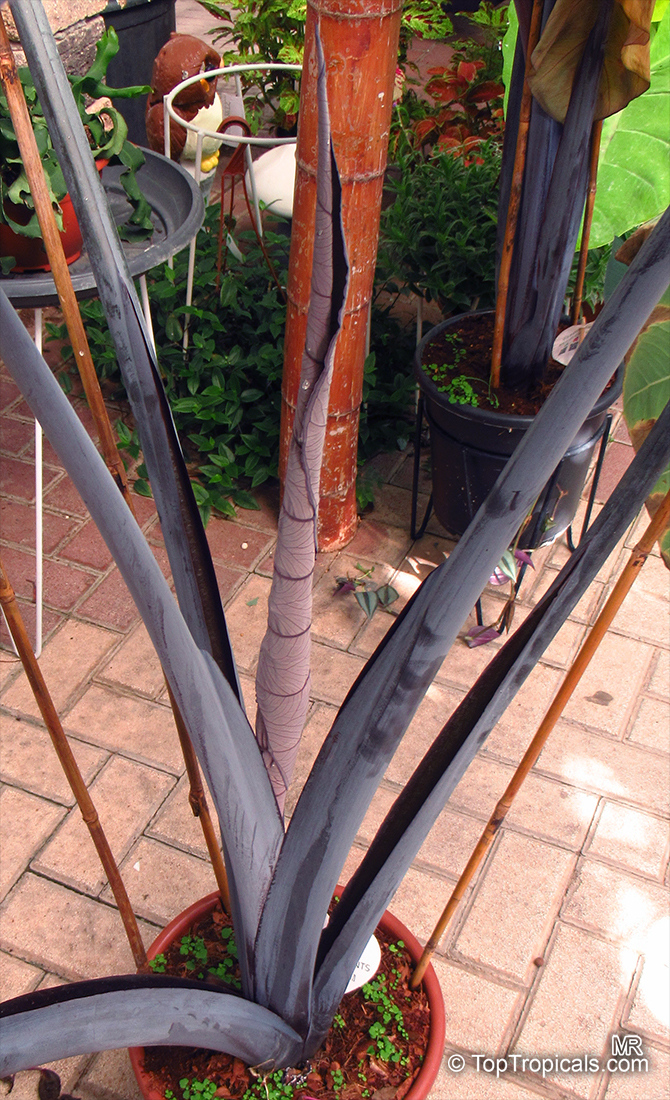
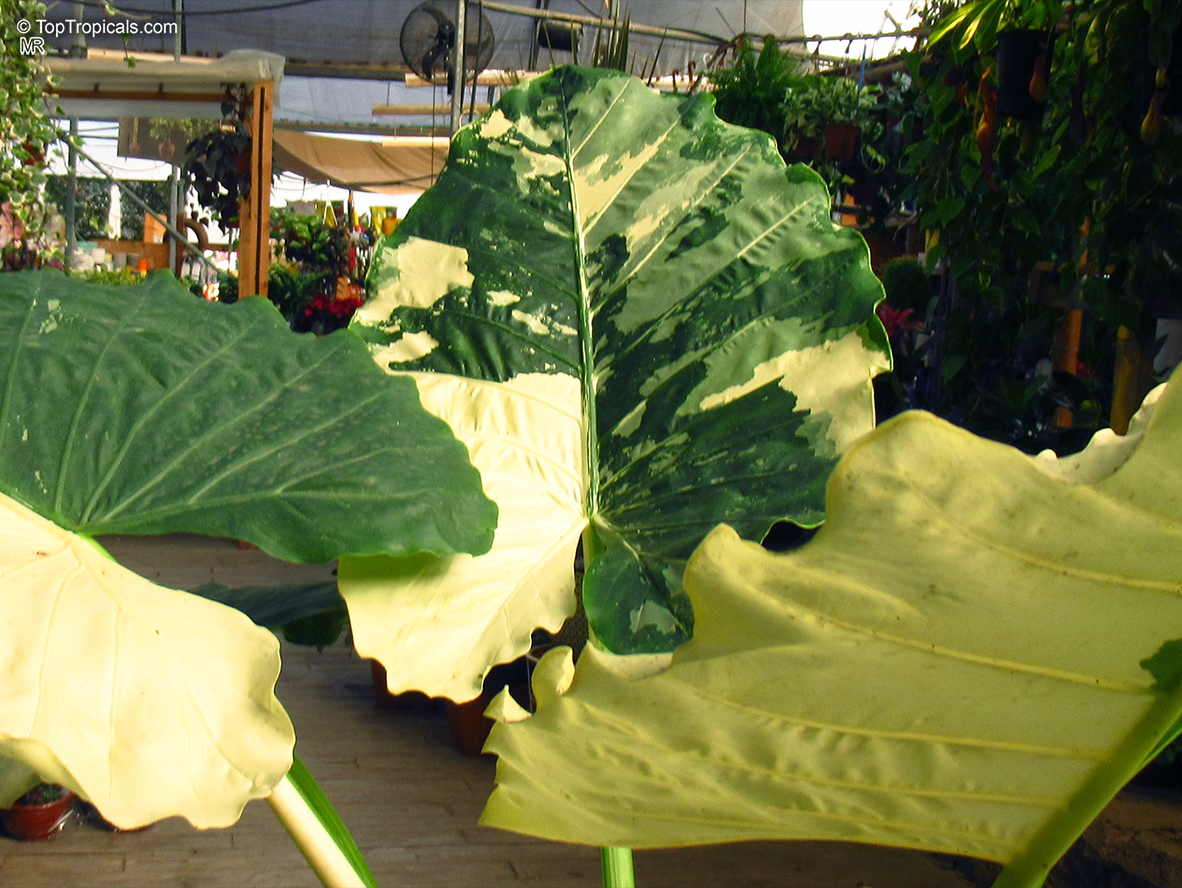
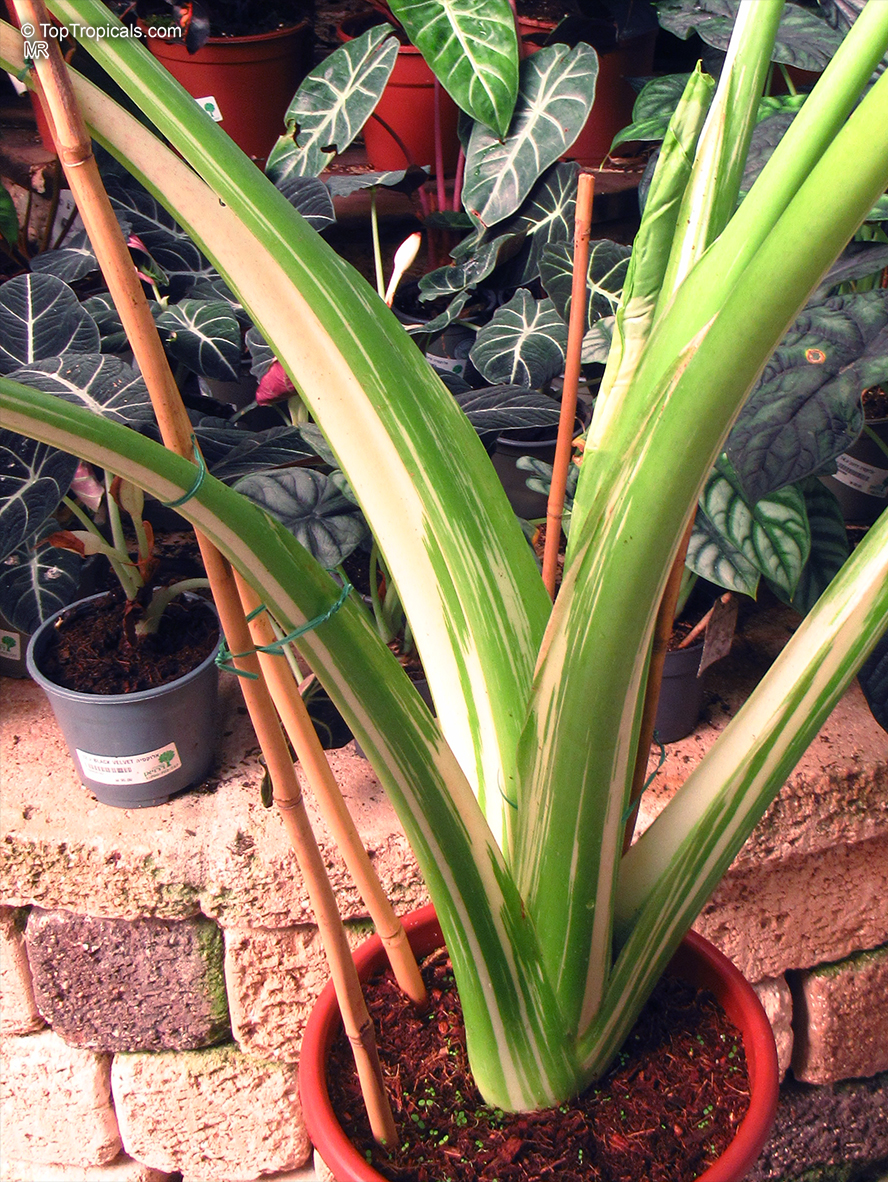
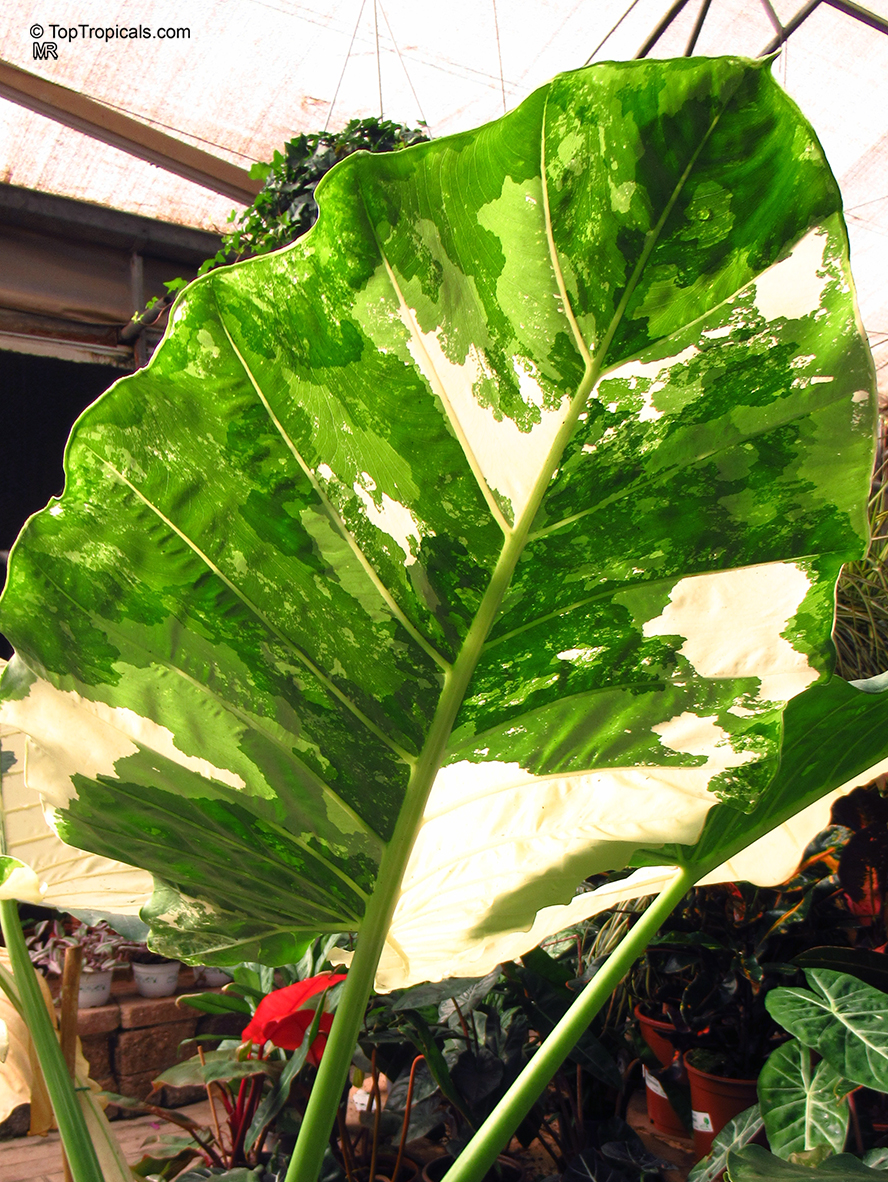
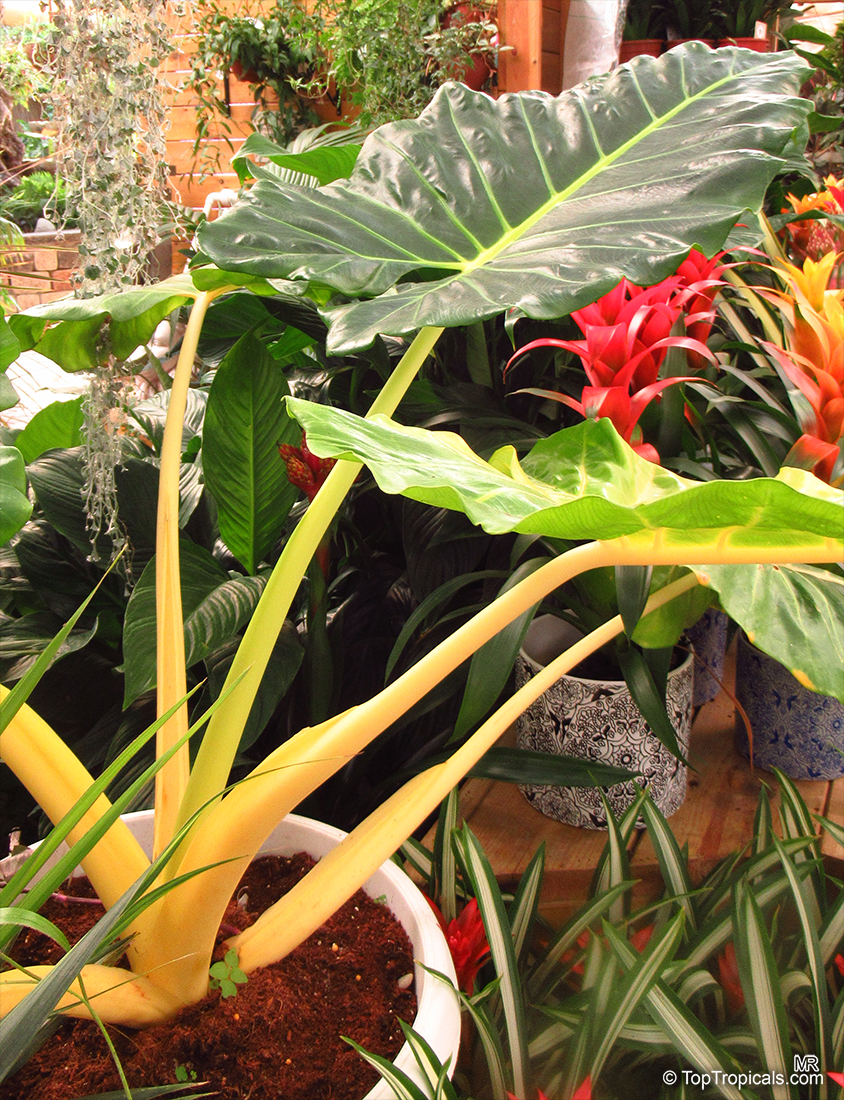

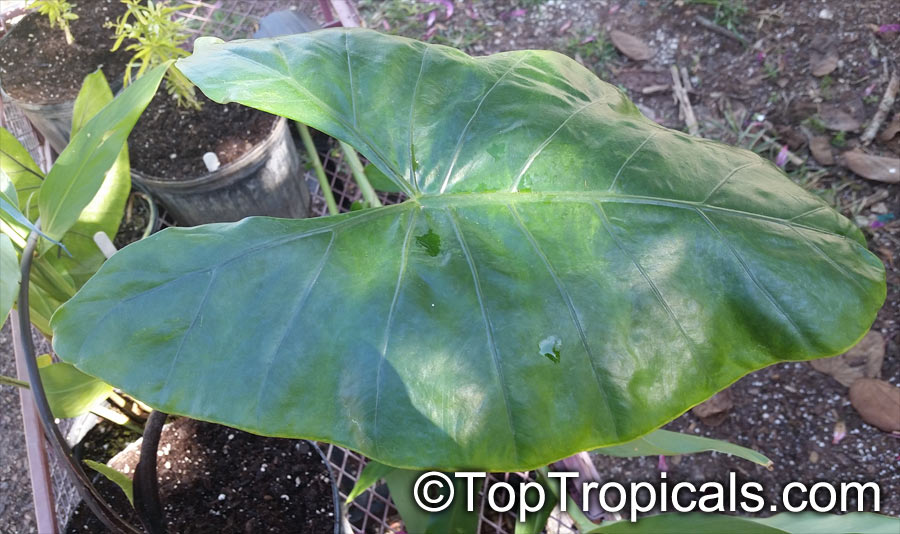
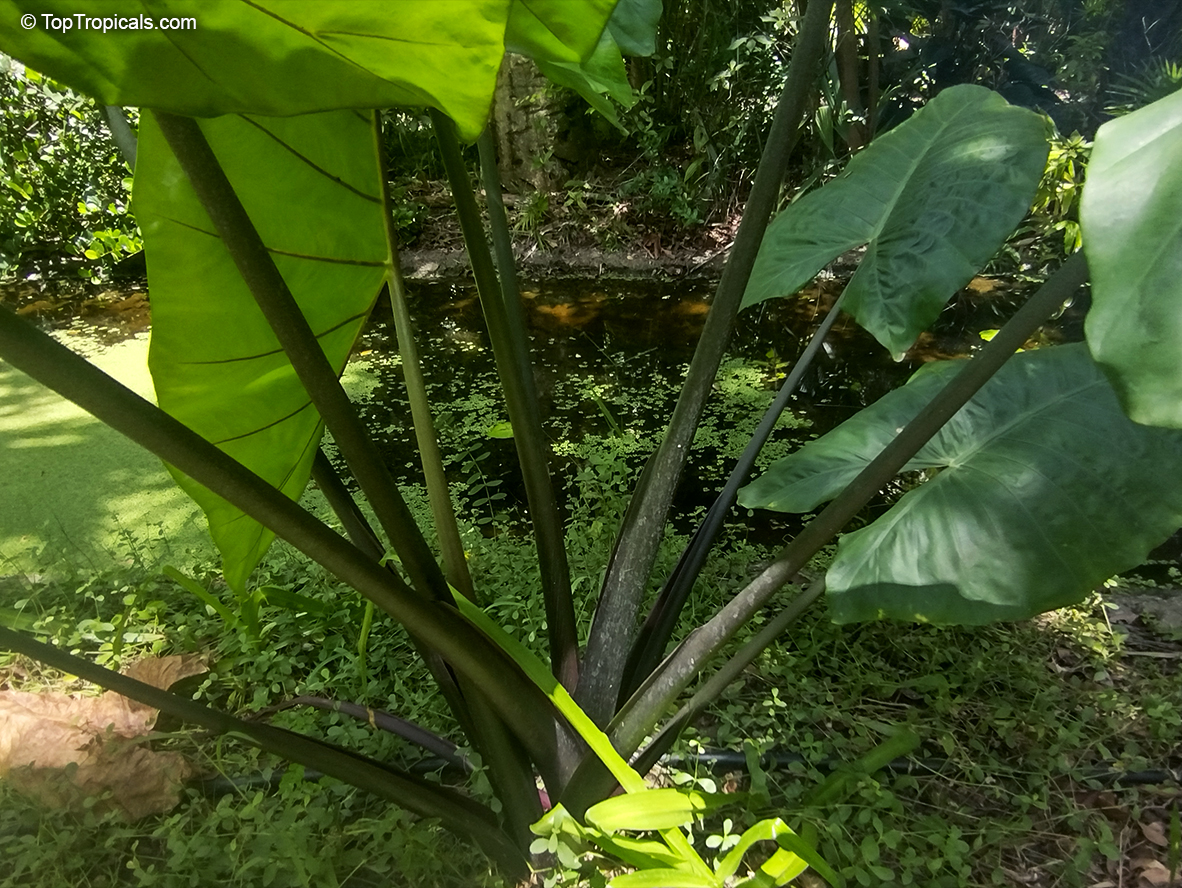
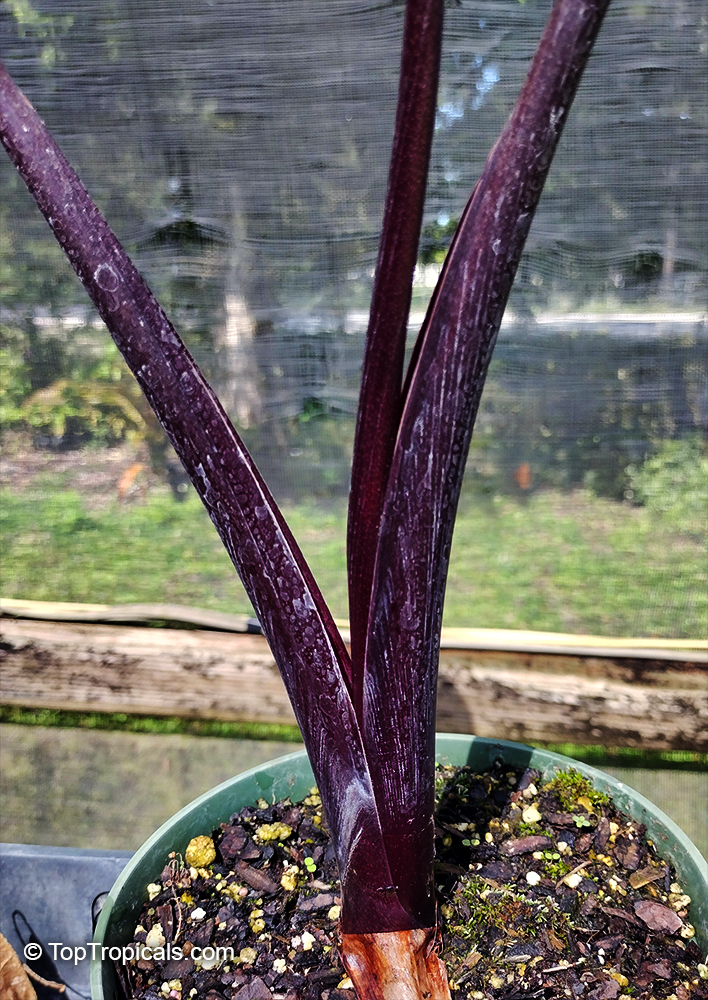
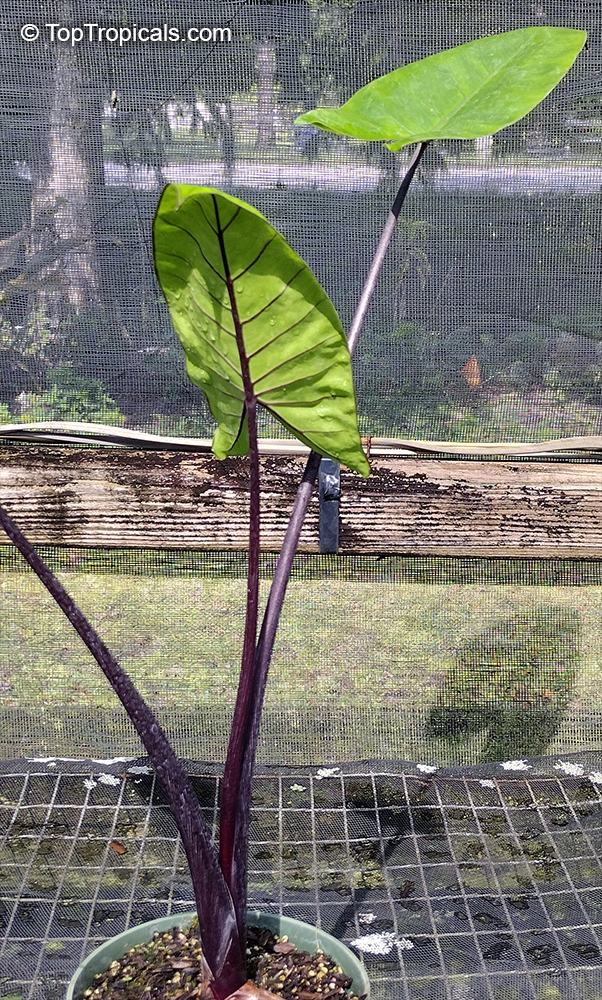
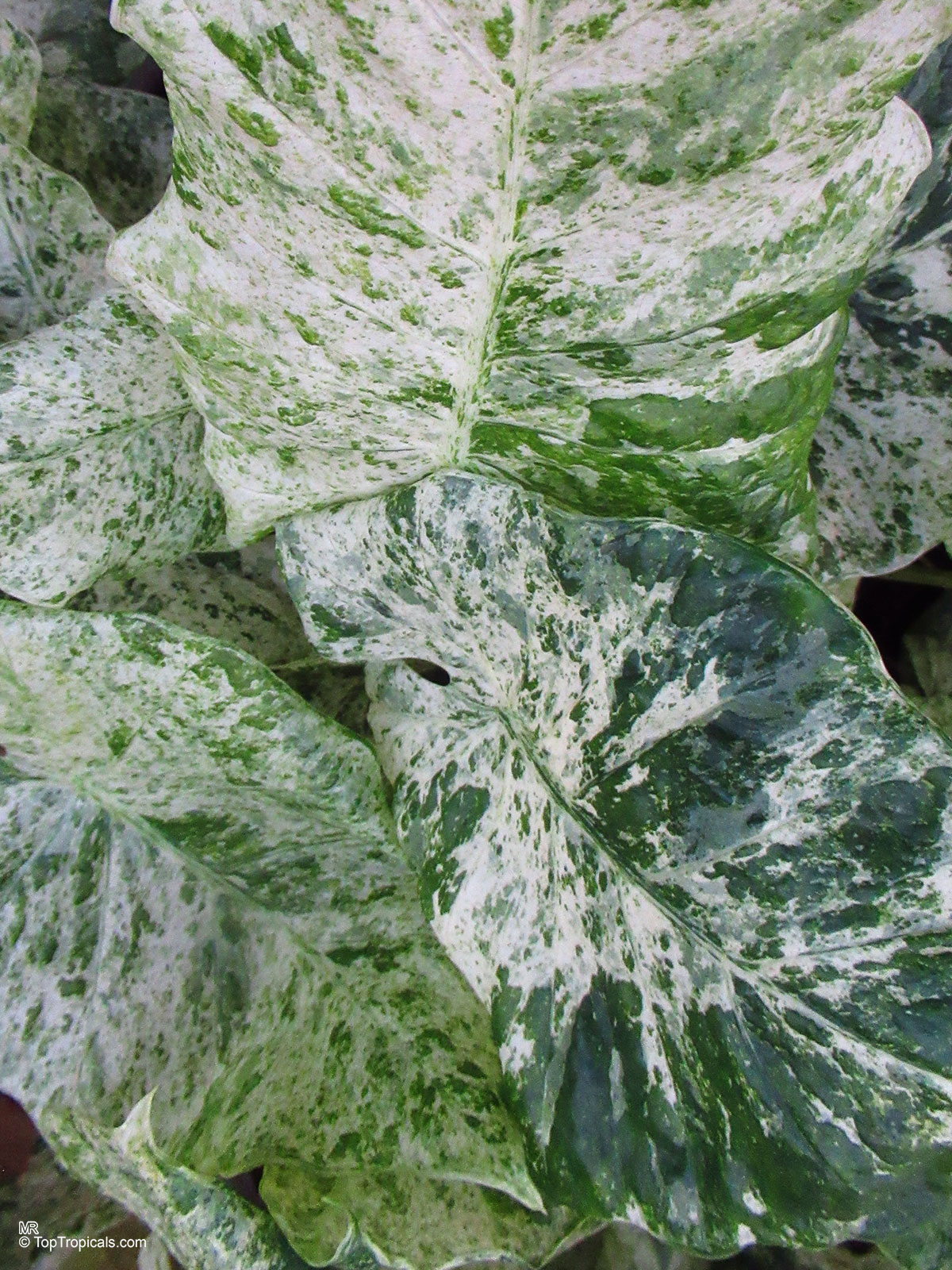
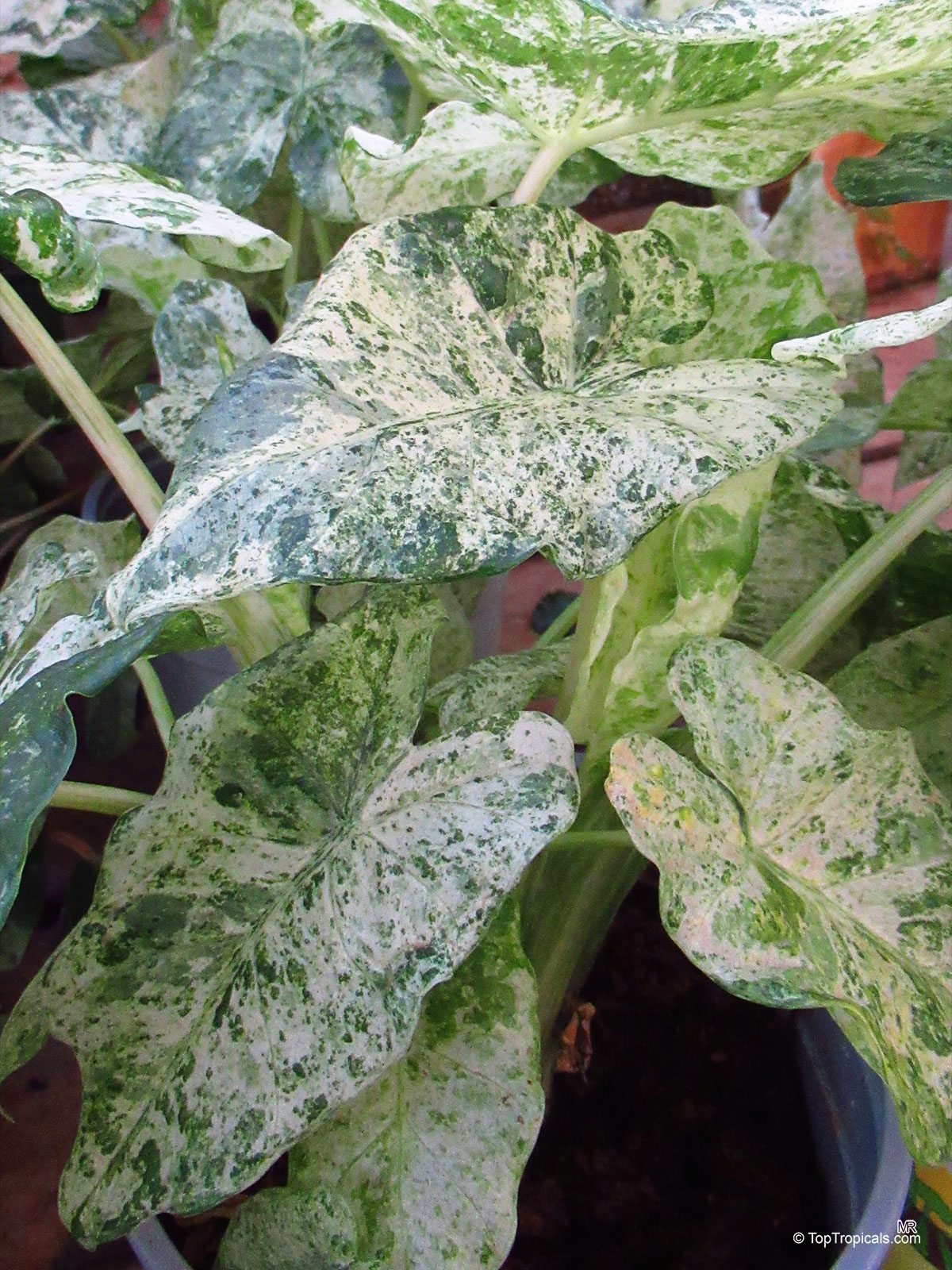
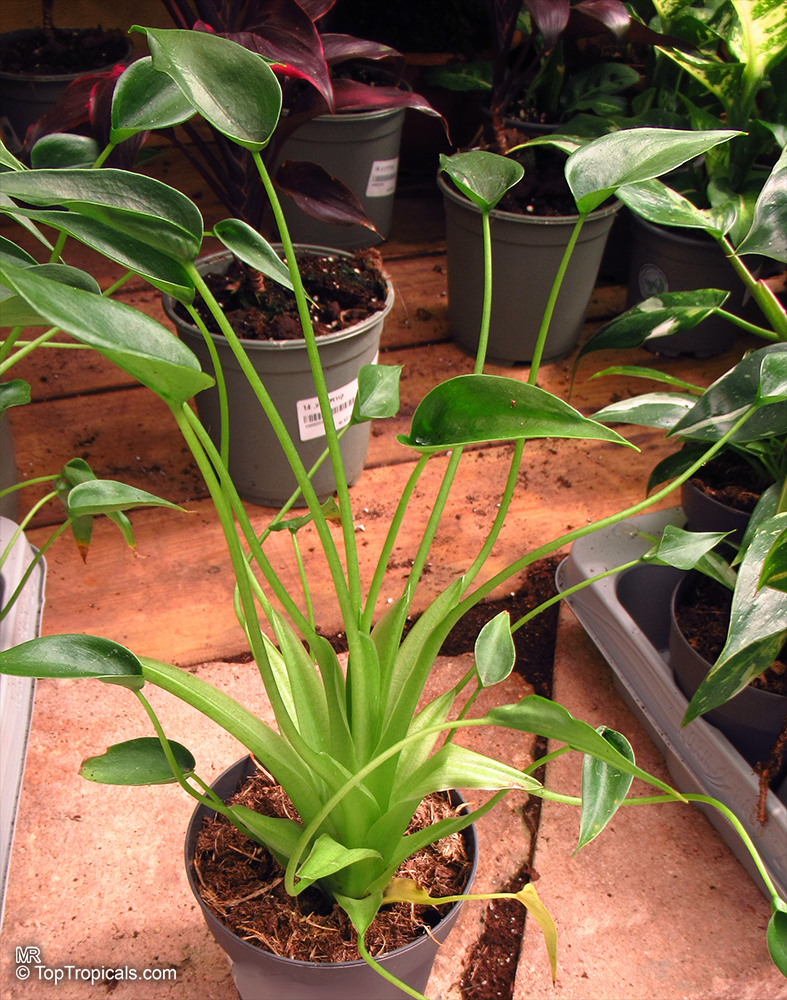
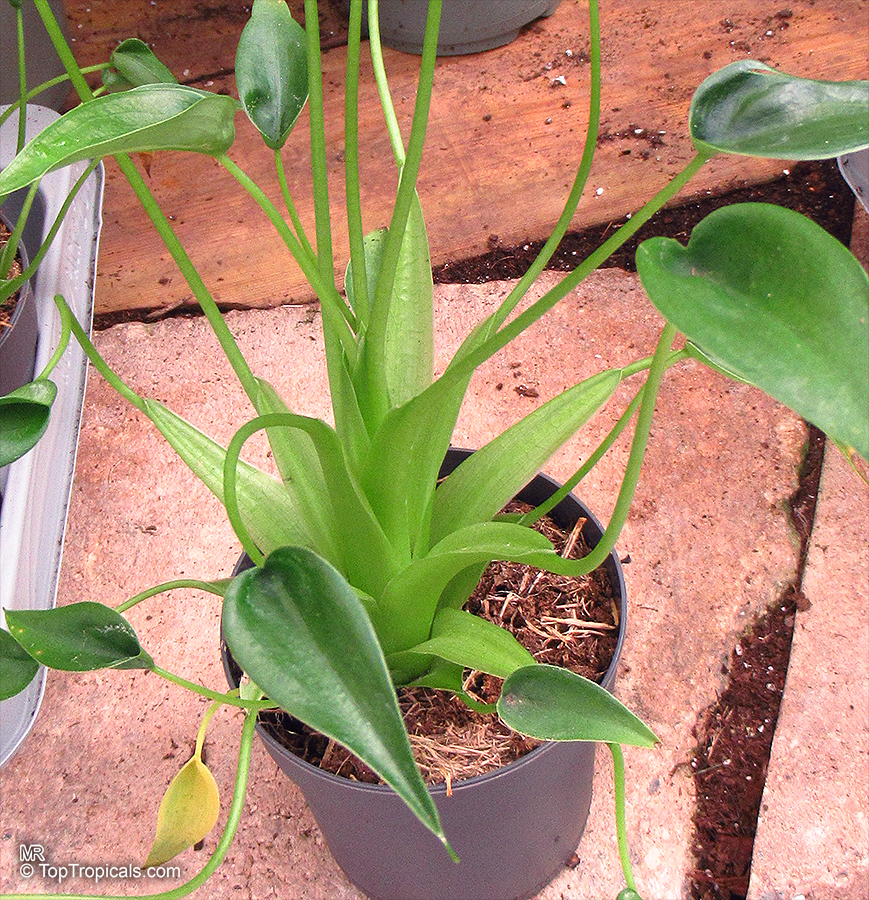
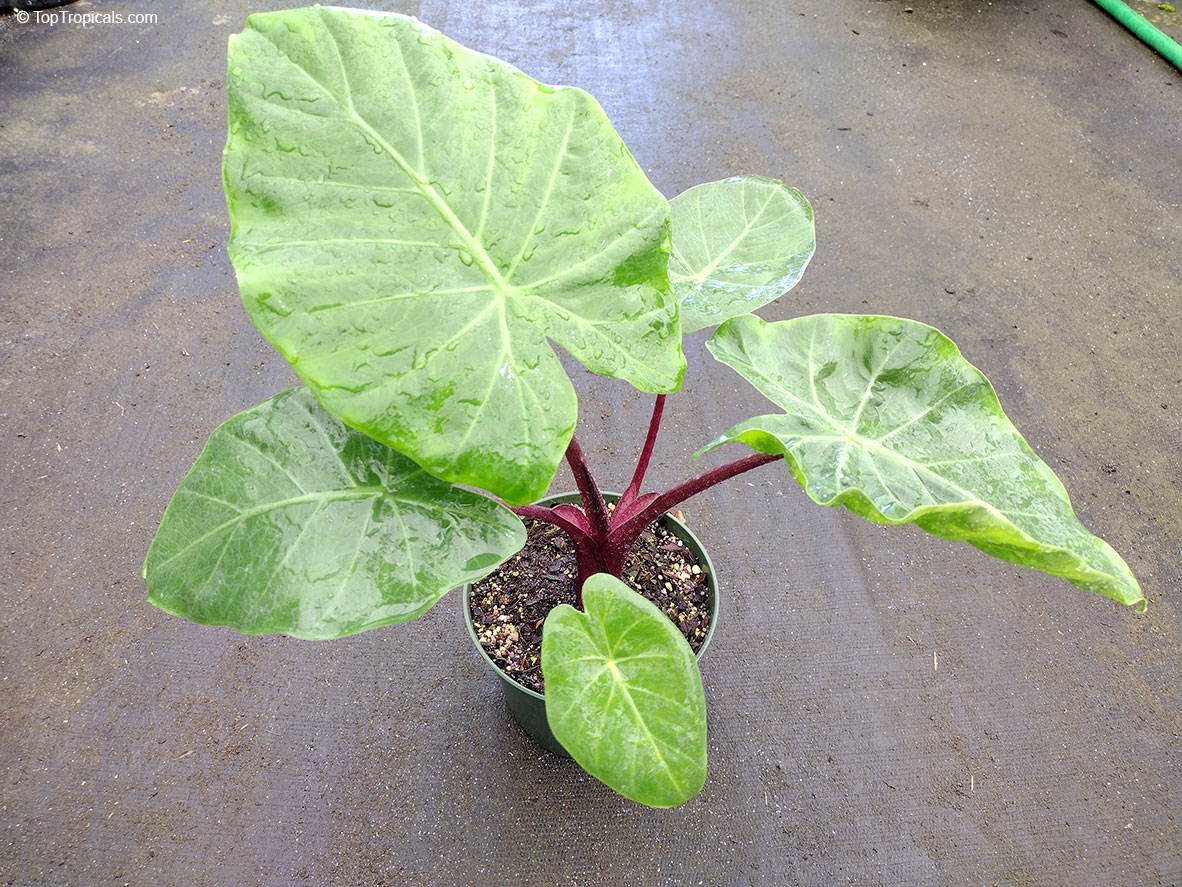
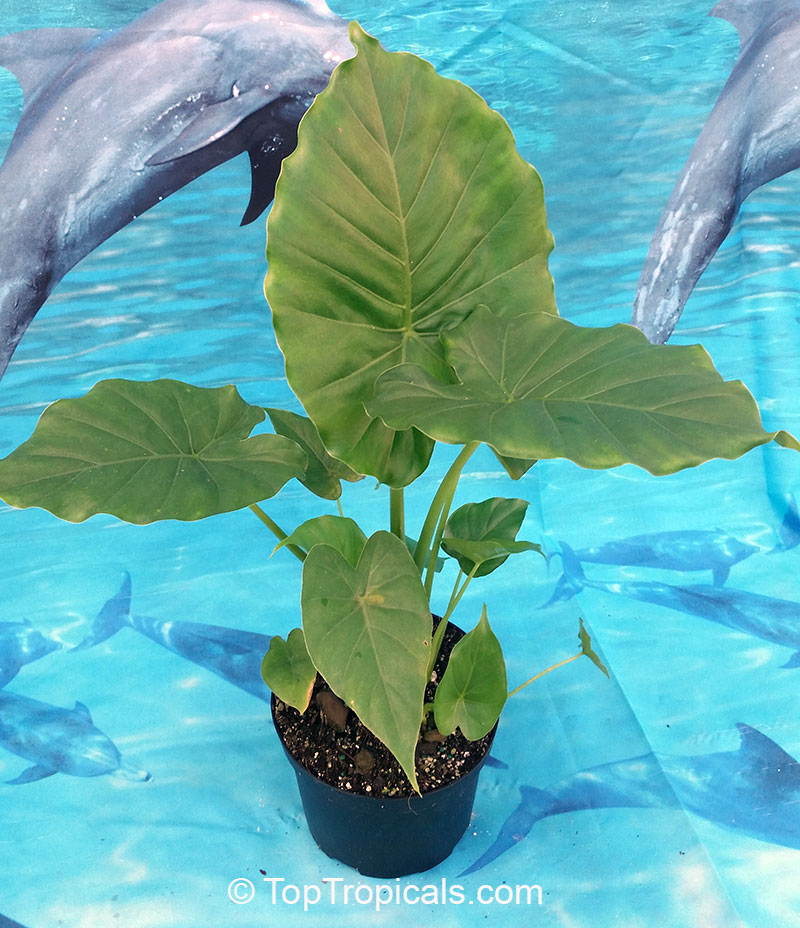

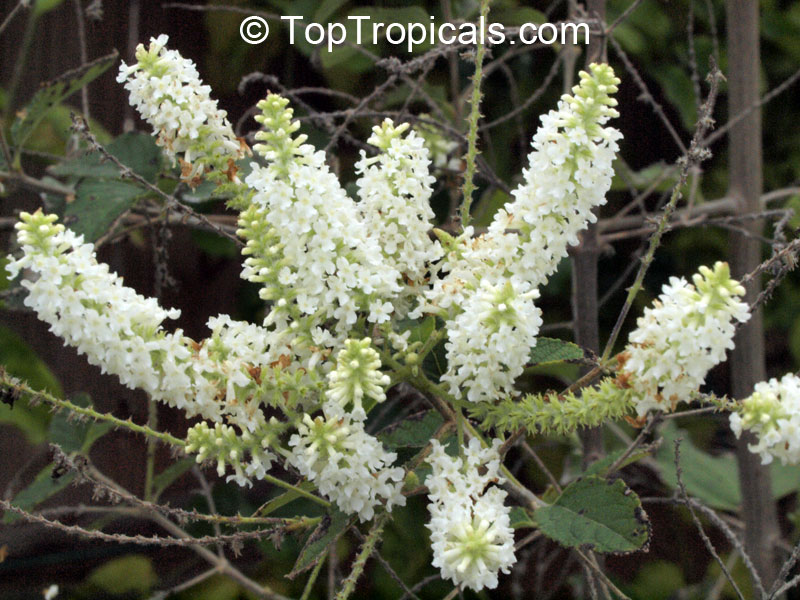
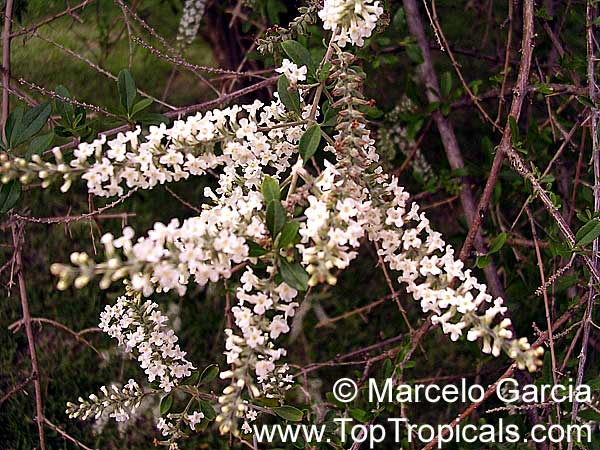
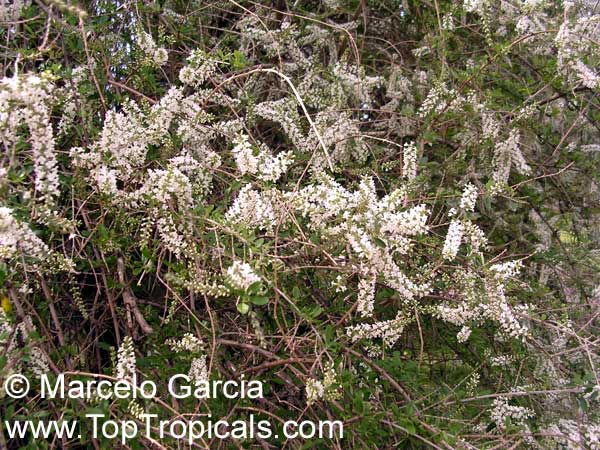
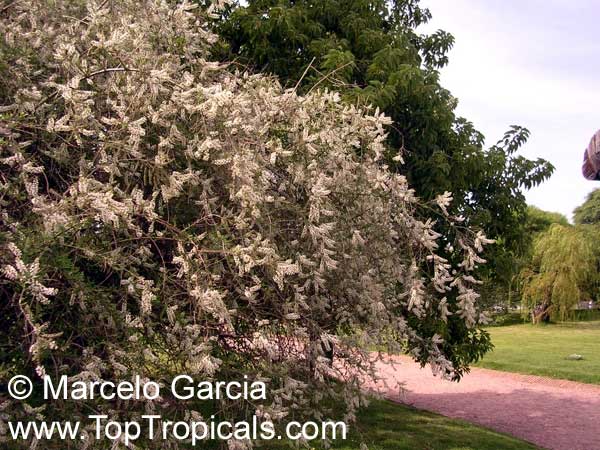
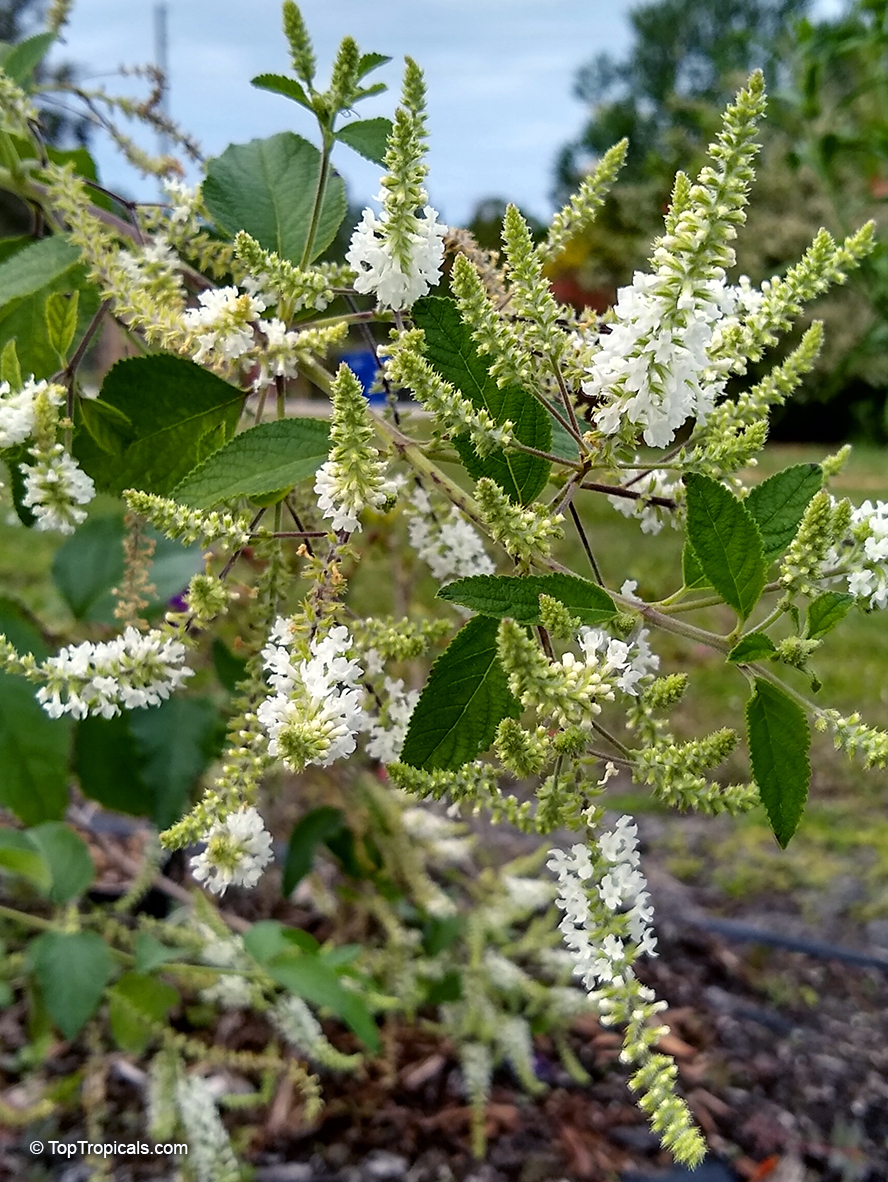
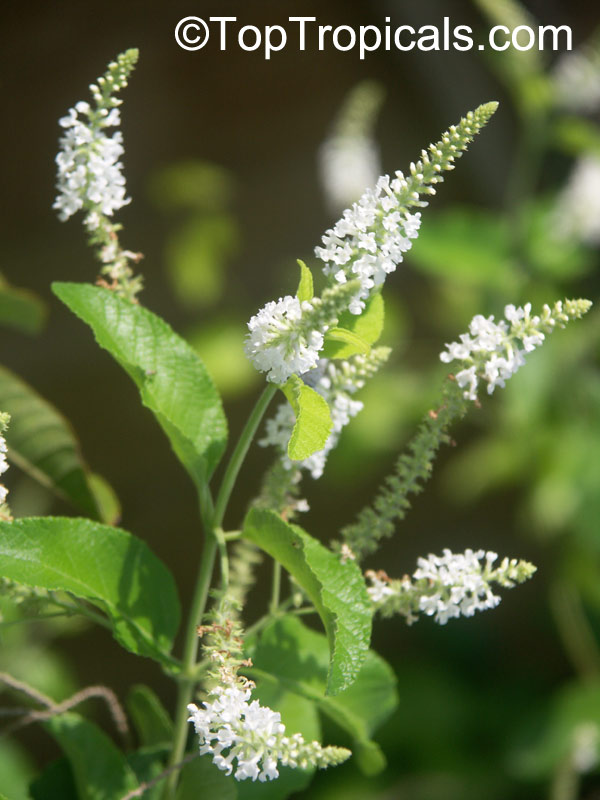
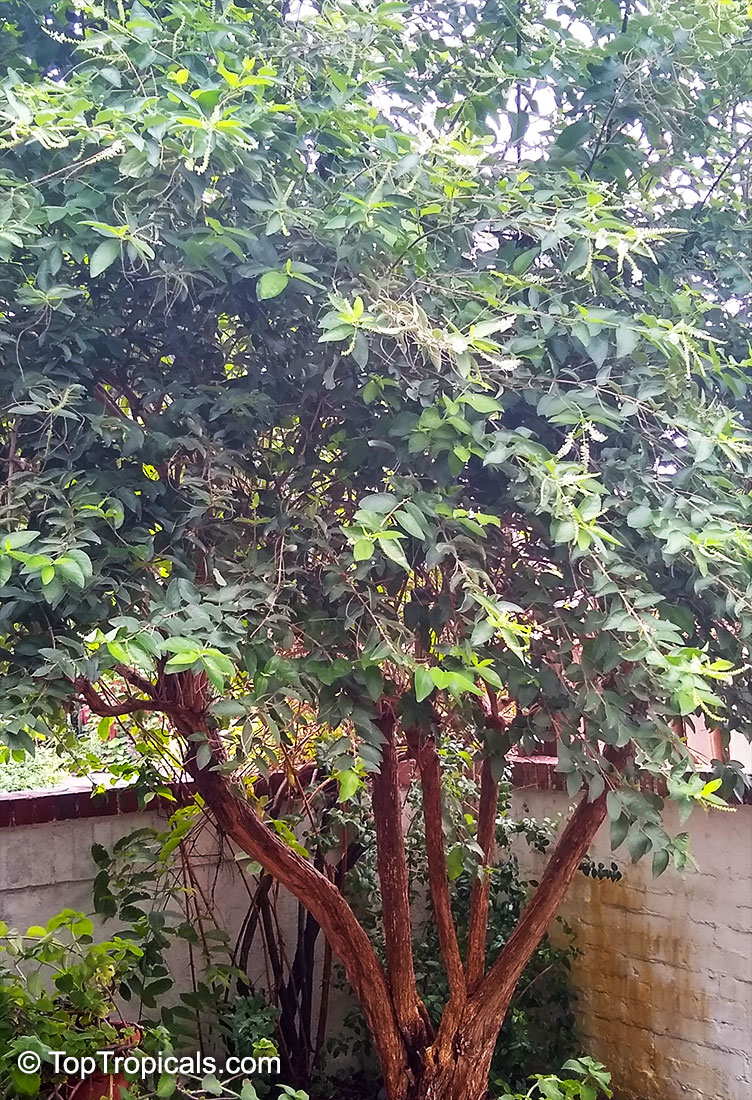
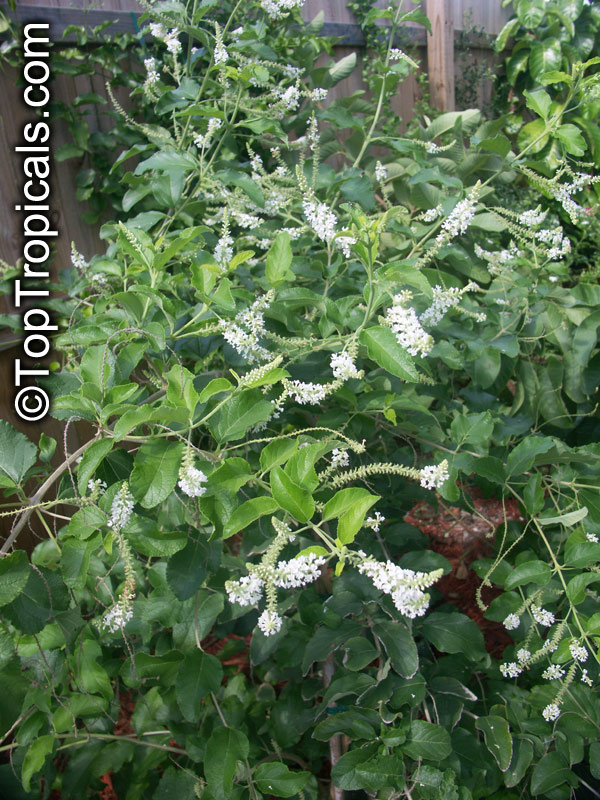
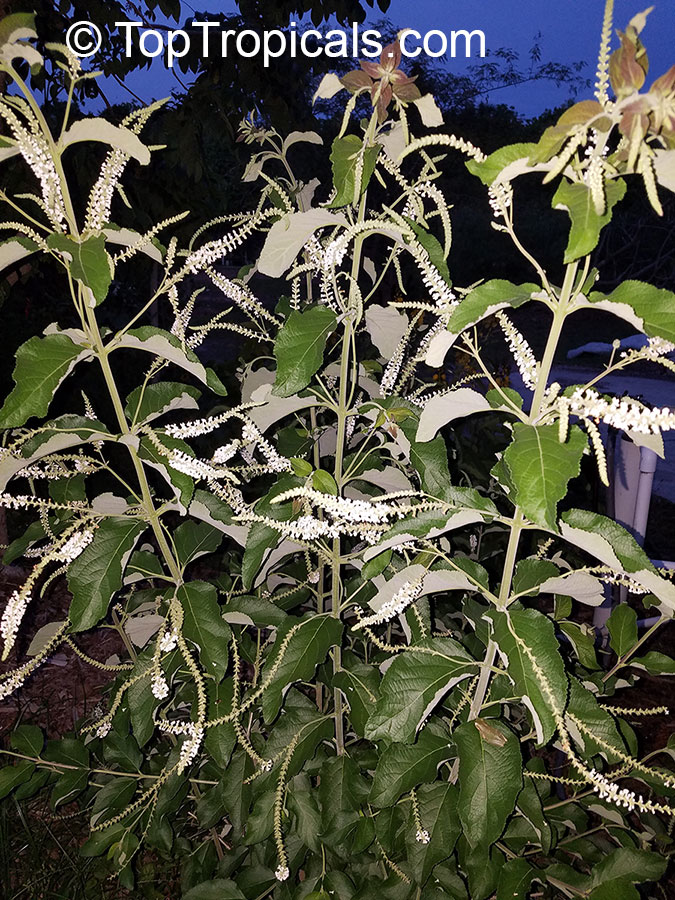
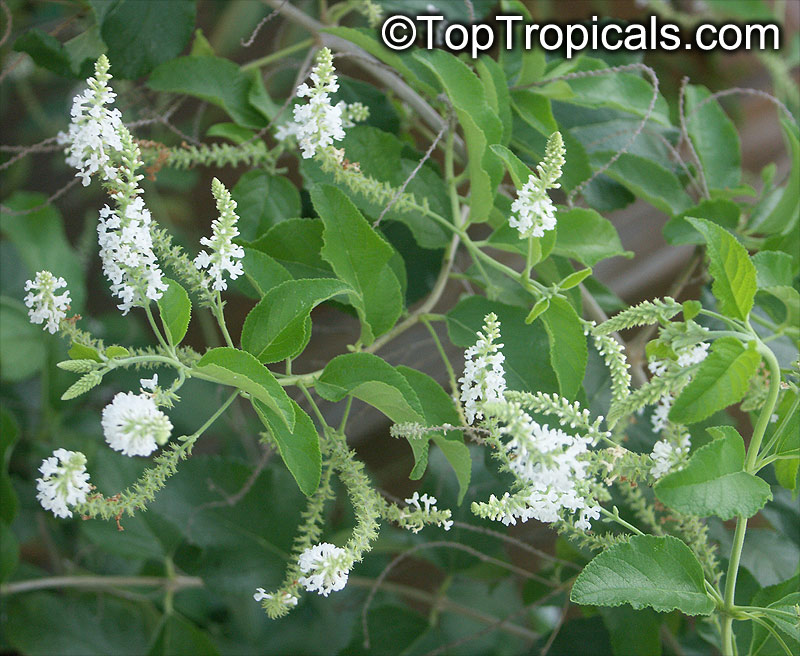
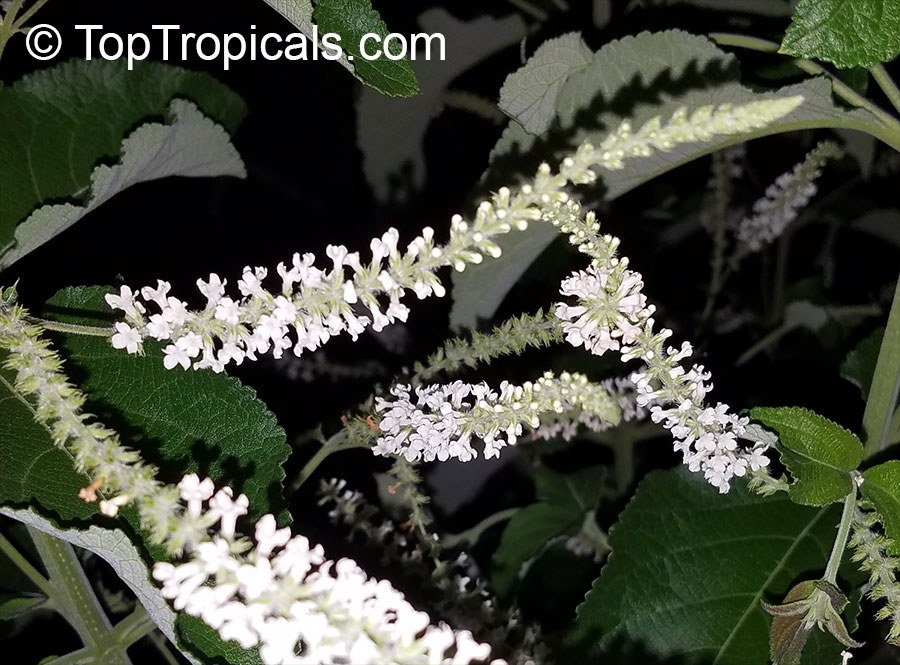
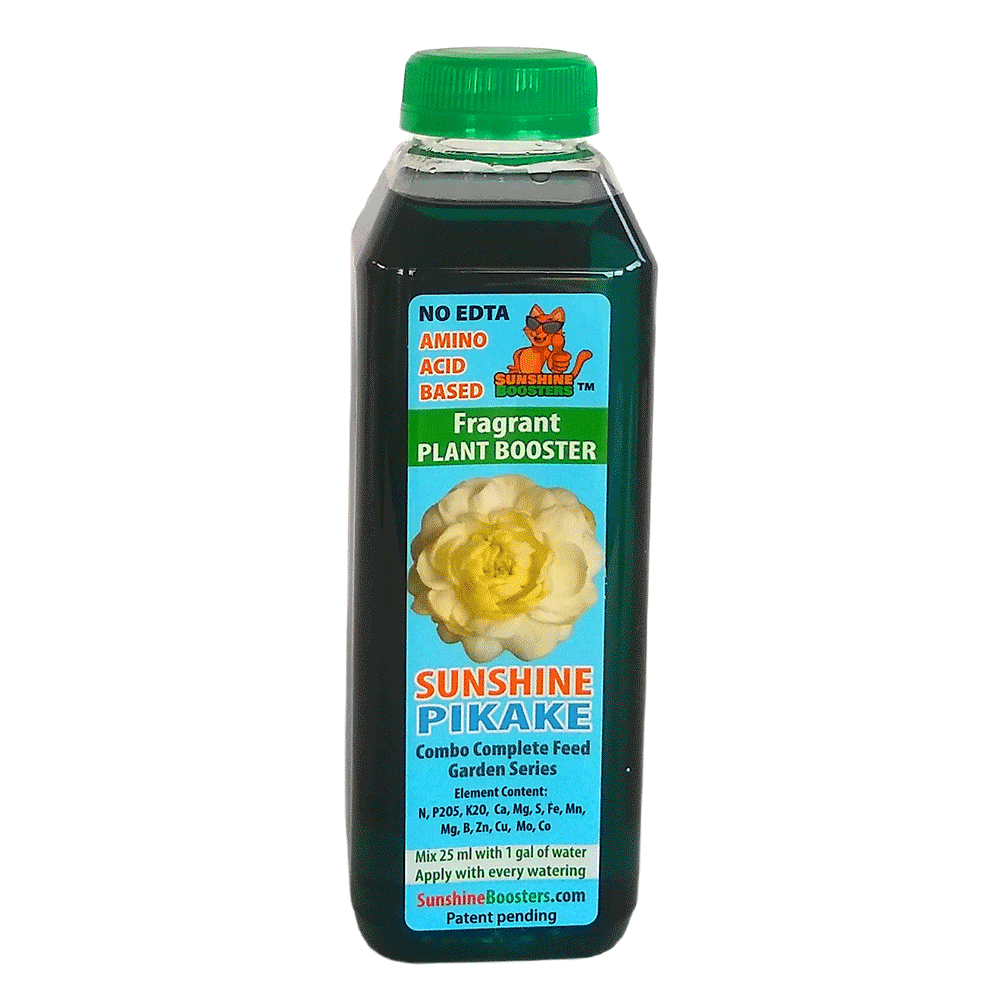 SUNSHINE Pikake (NPK 2-2-4) - eco-friendly concentrated nutrition booster for fragrant flowers. Improves quantity and quality of flowers. Encourages profuse blooming. Increases flower fragrance intensity. Can be used with every watering. For best results, use in combination with
SUNSHINE Pikake (NPK 2-2-4) - eco-friendly concentrated nutrition booster for fragrant flowers. Improves quantity and quality of flowers. Encourages profuse blooming. Increases flower fragrance intensity. Can be used with every watering. For best results, use in combination with 